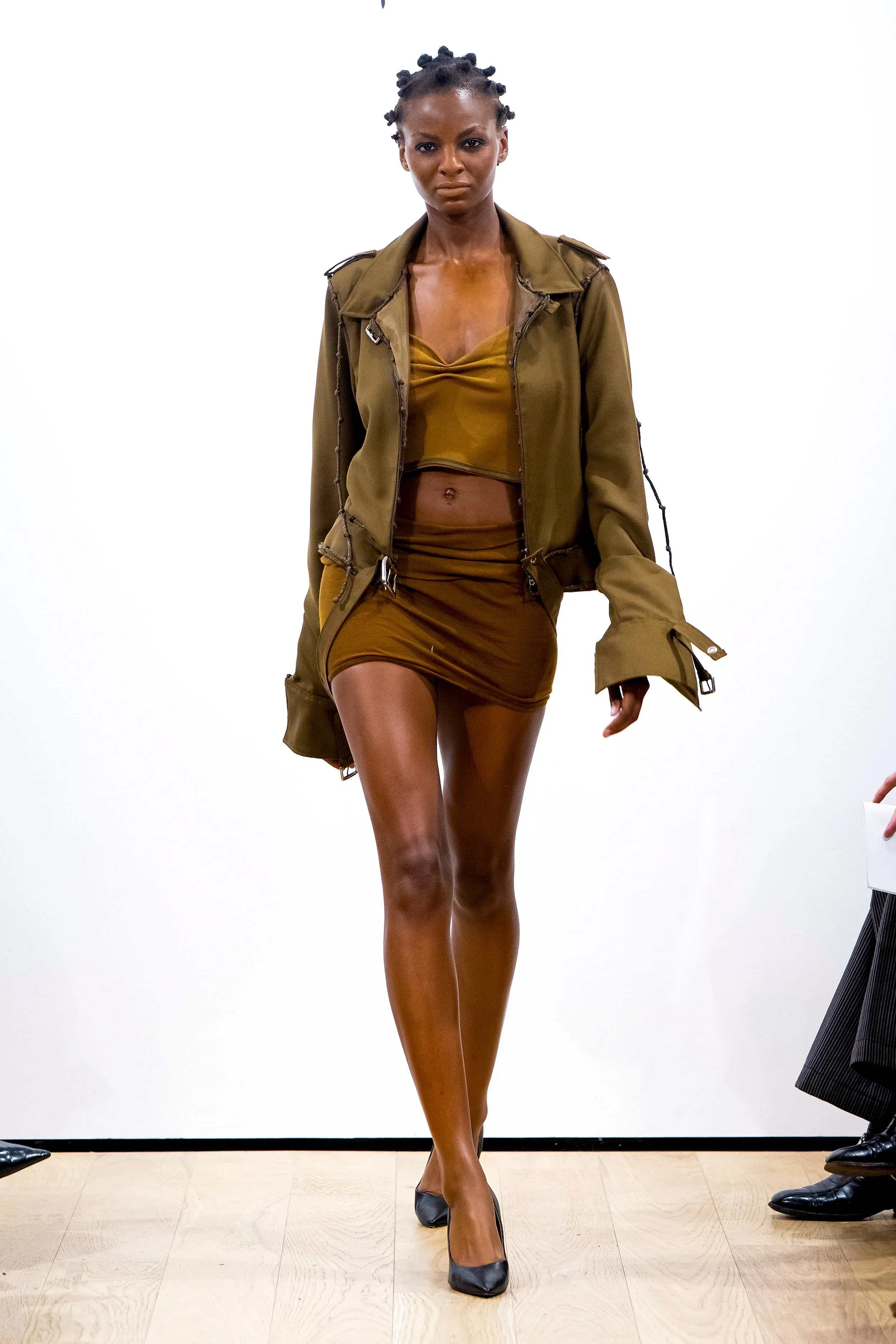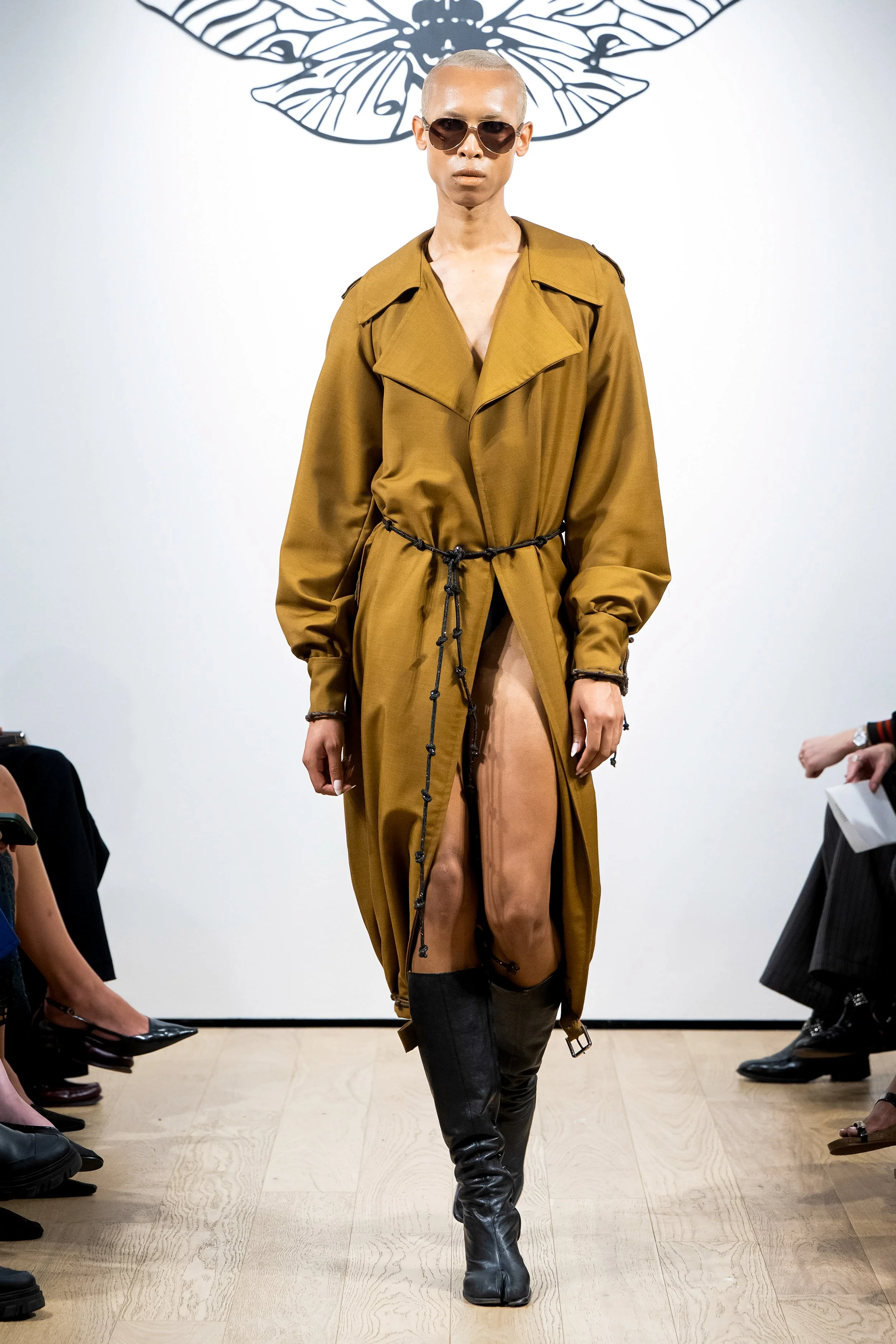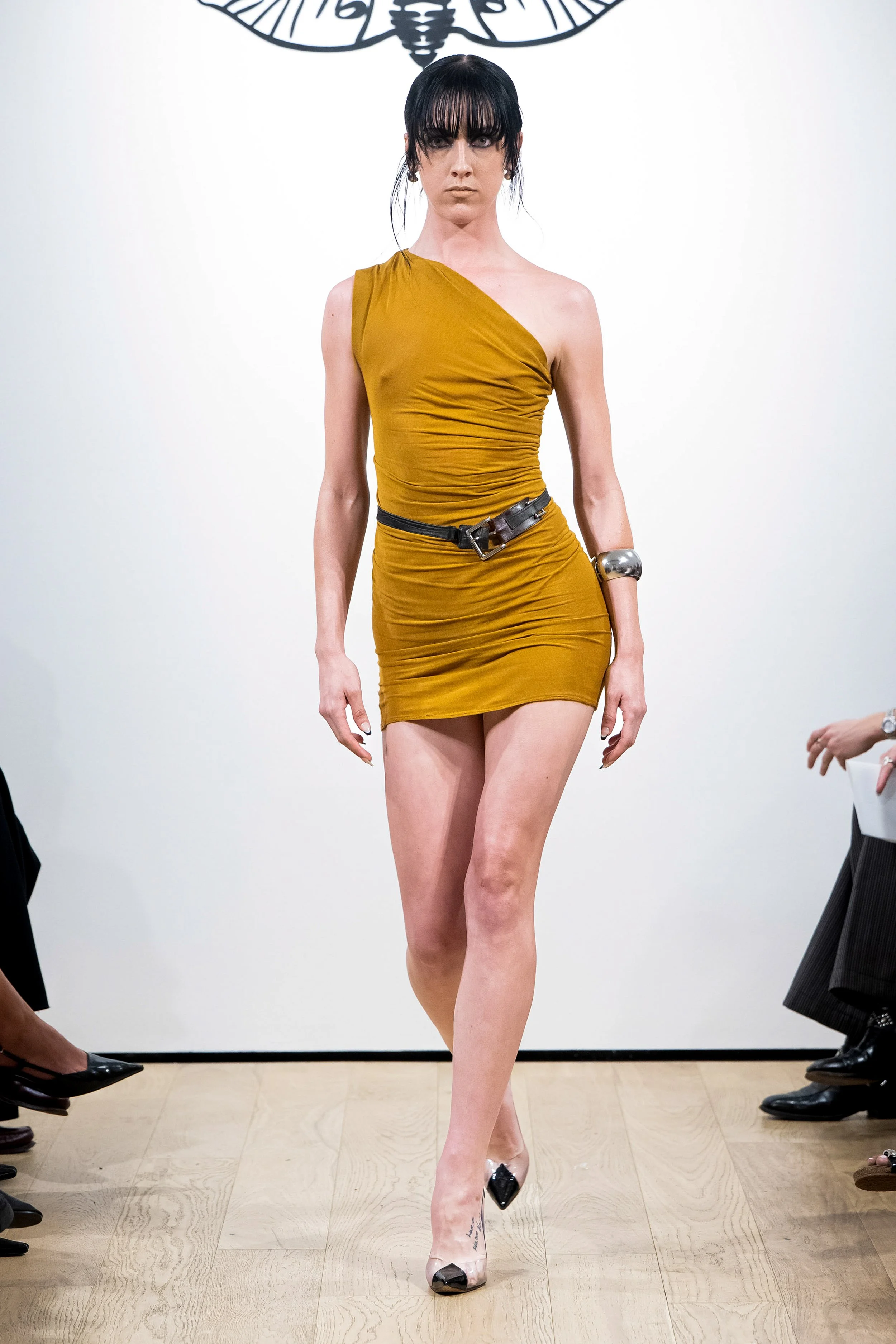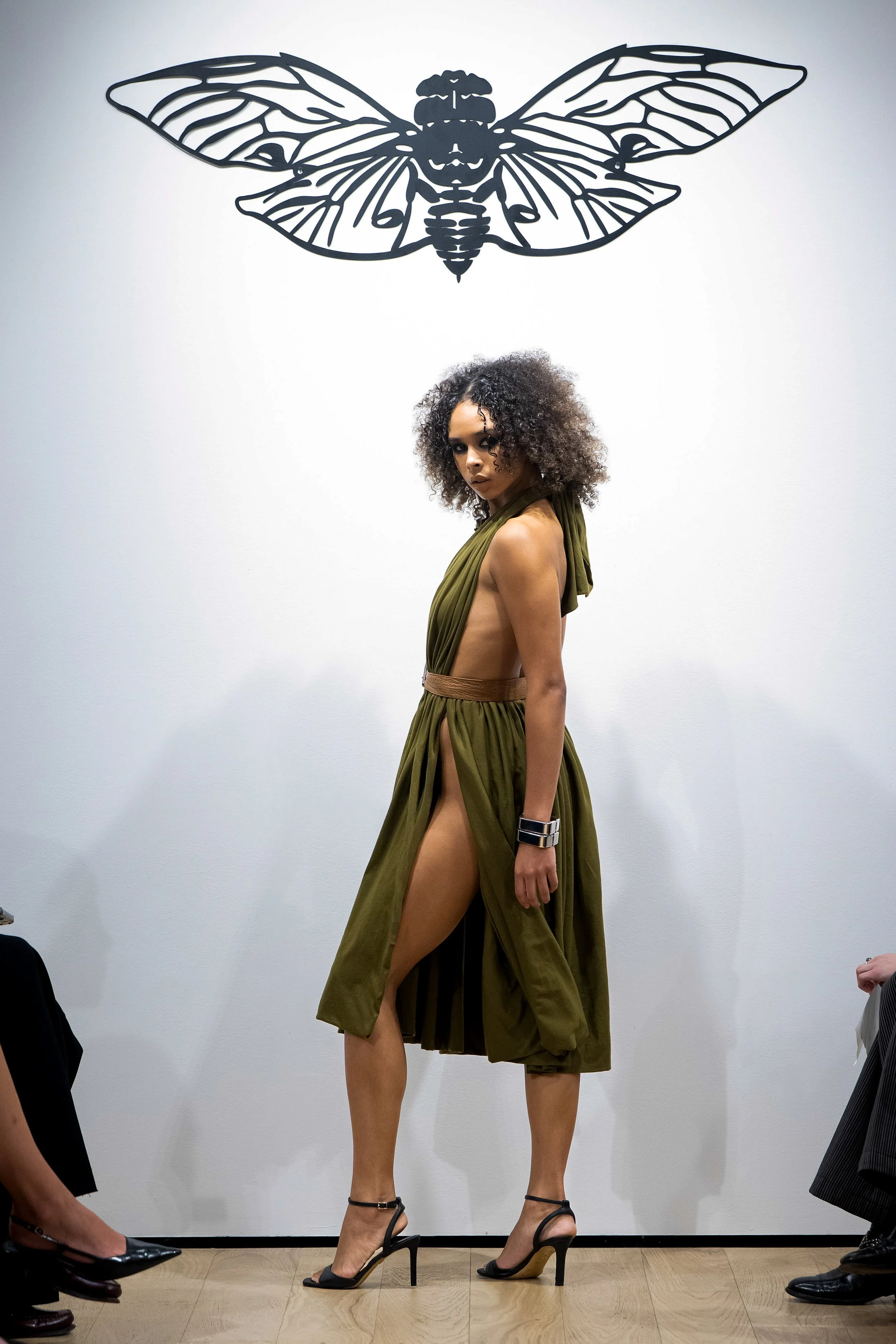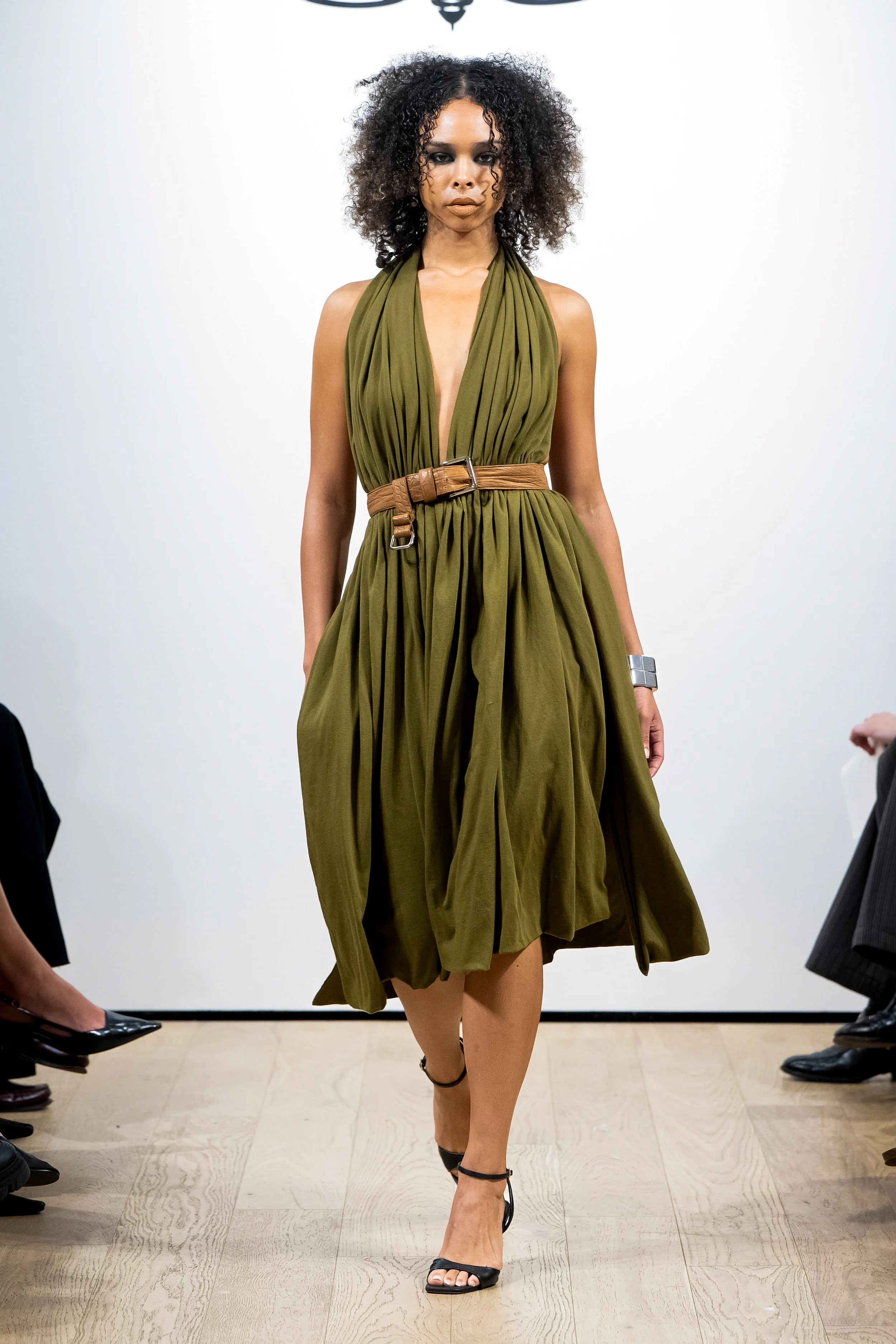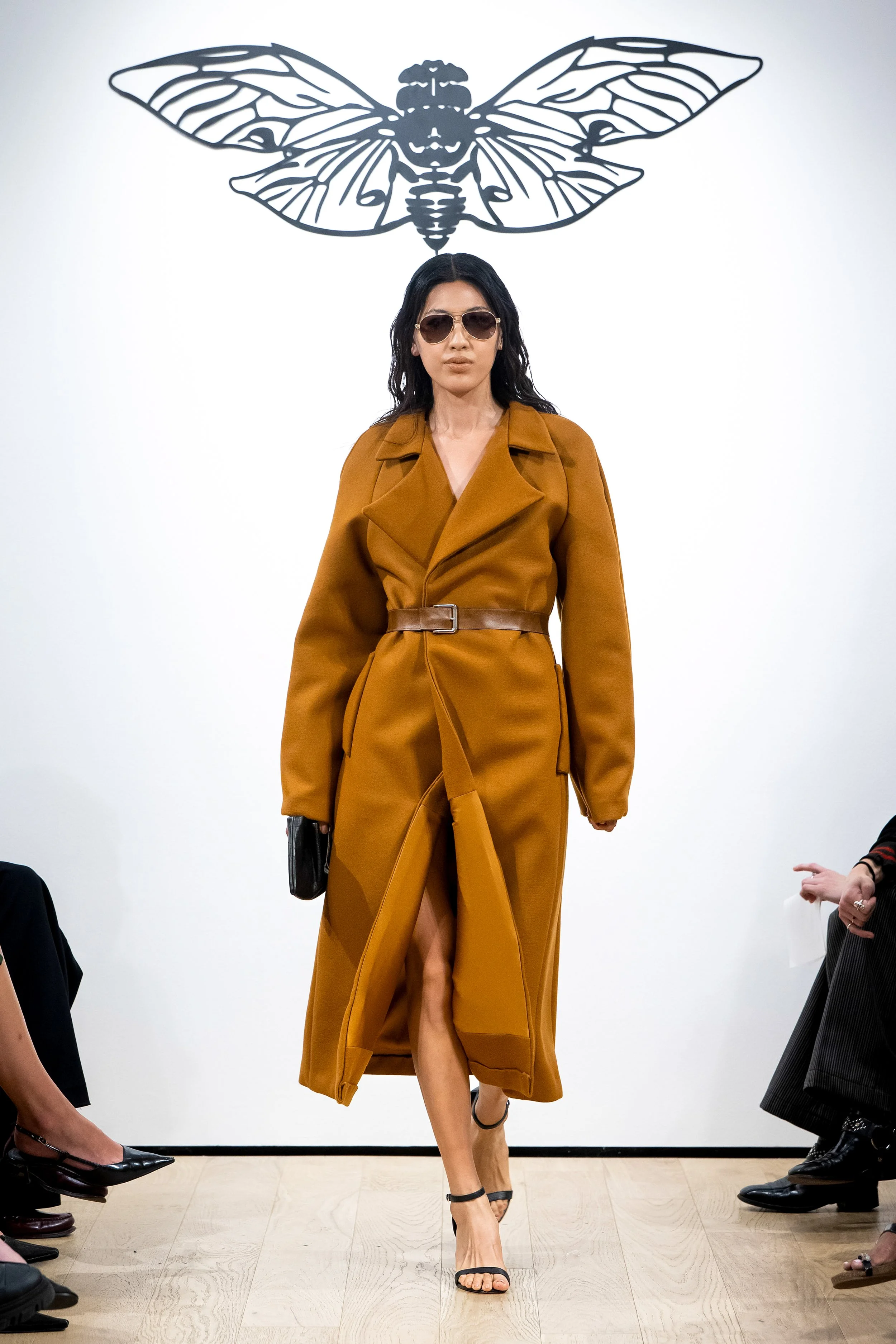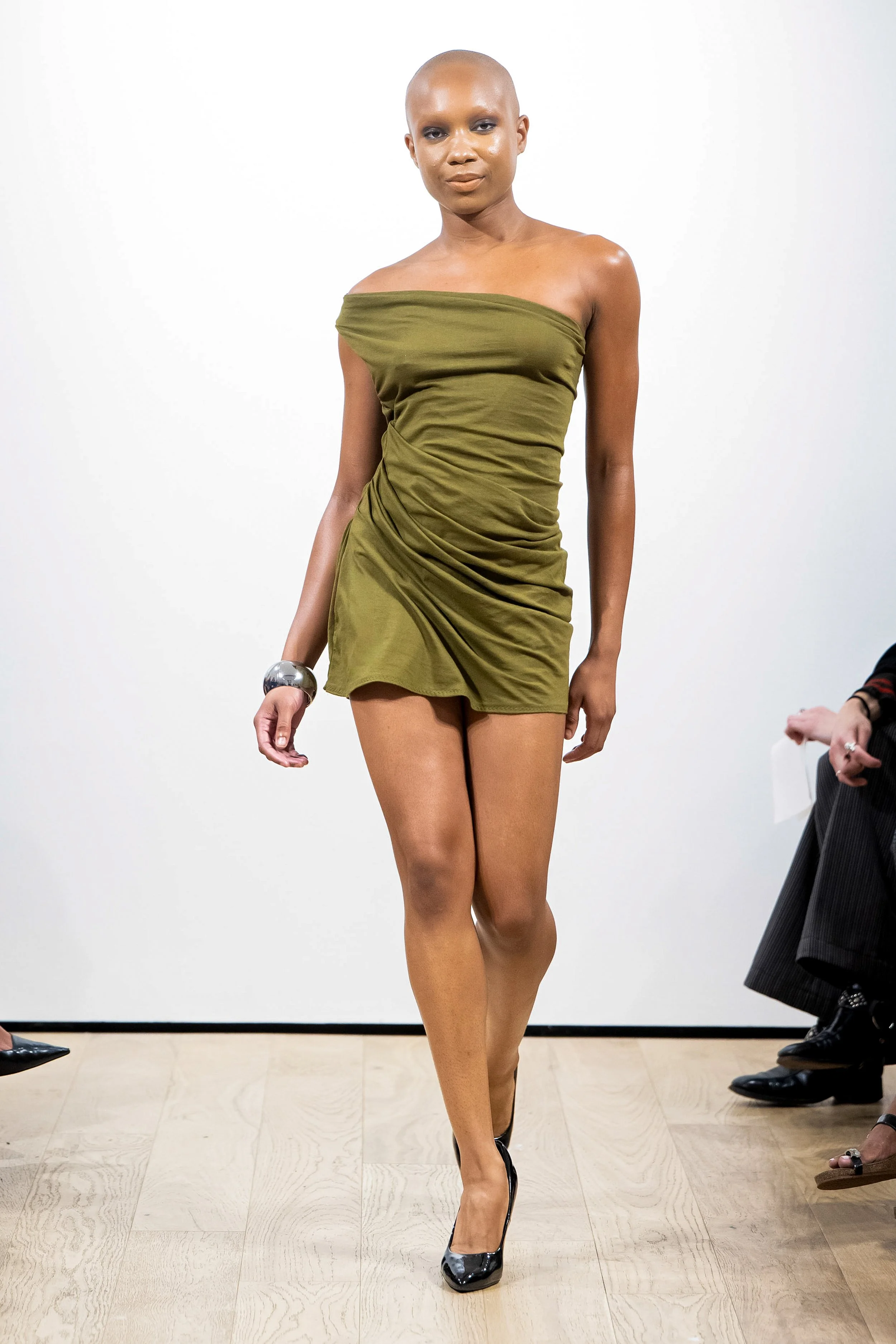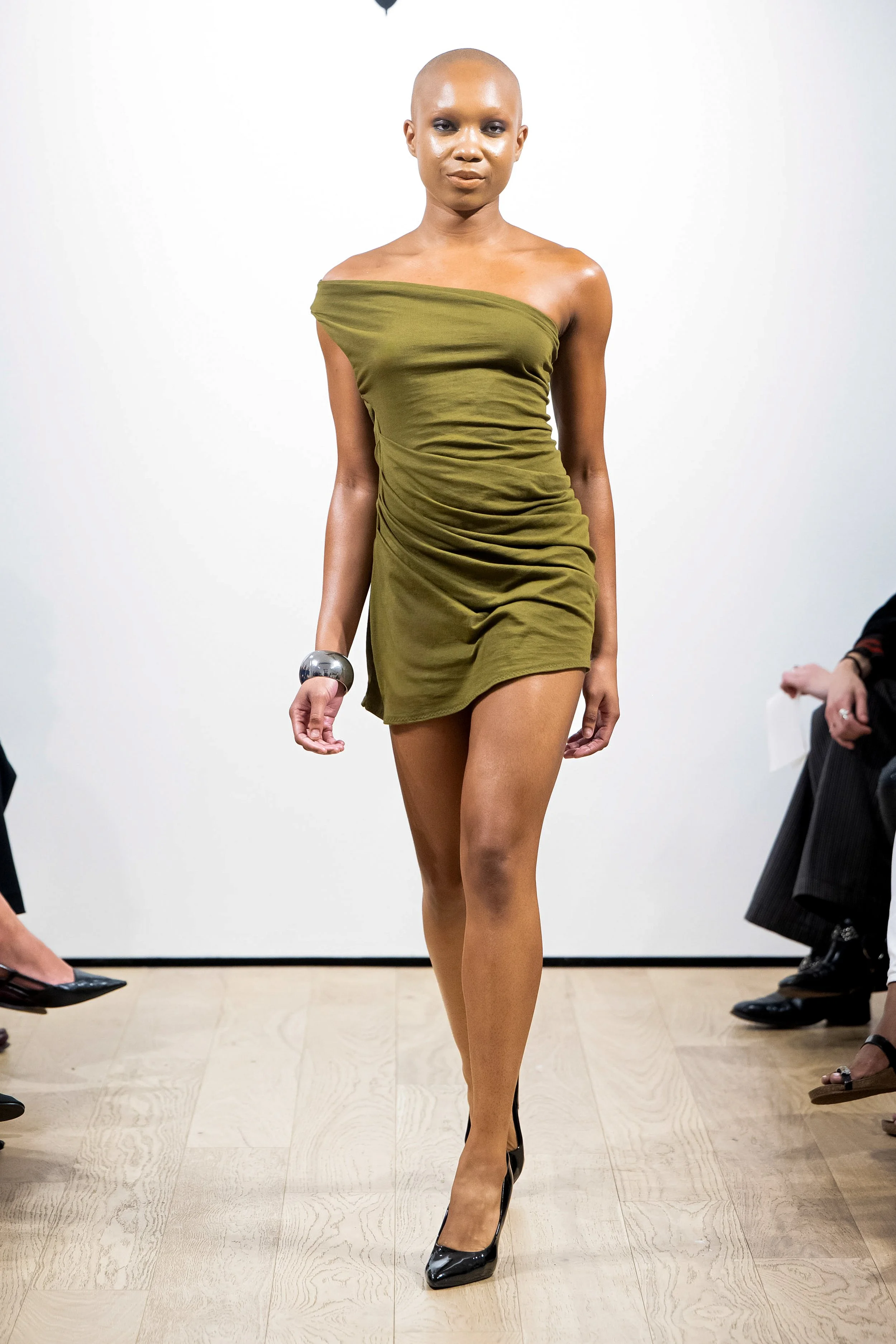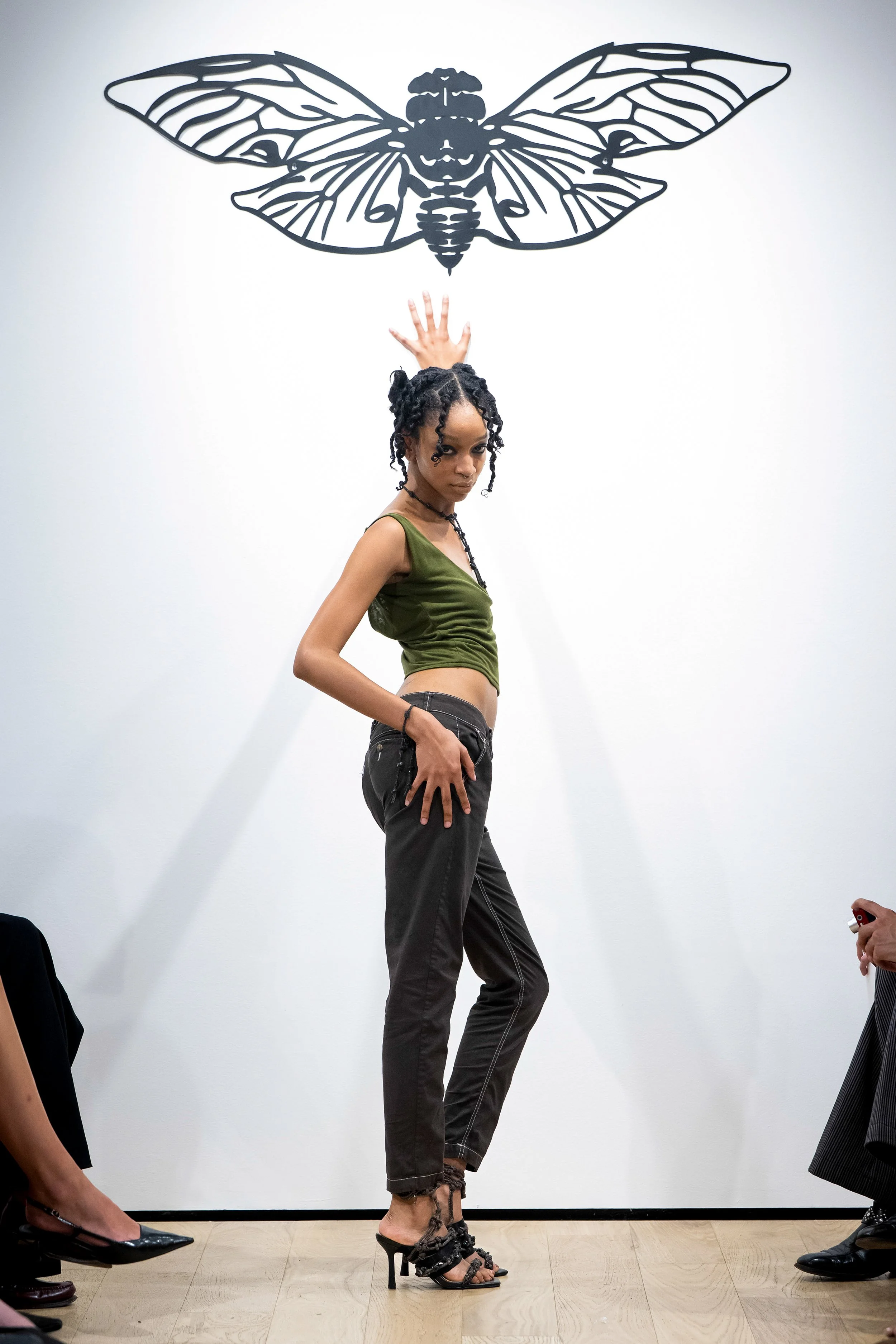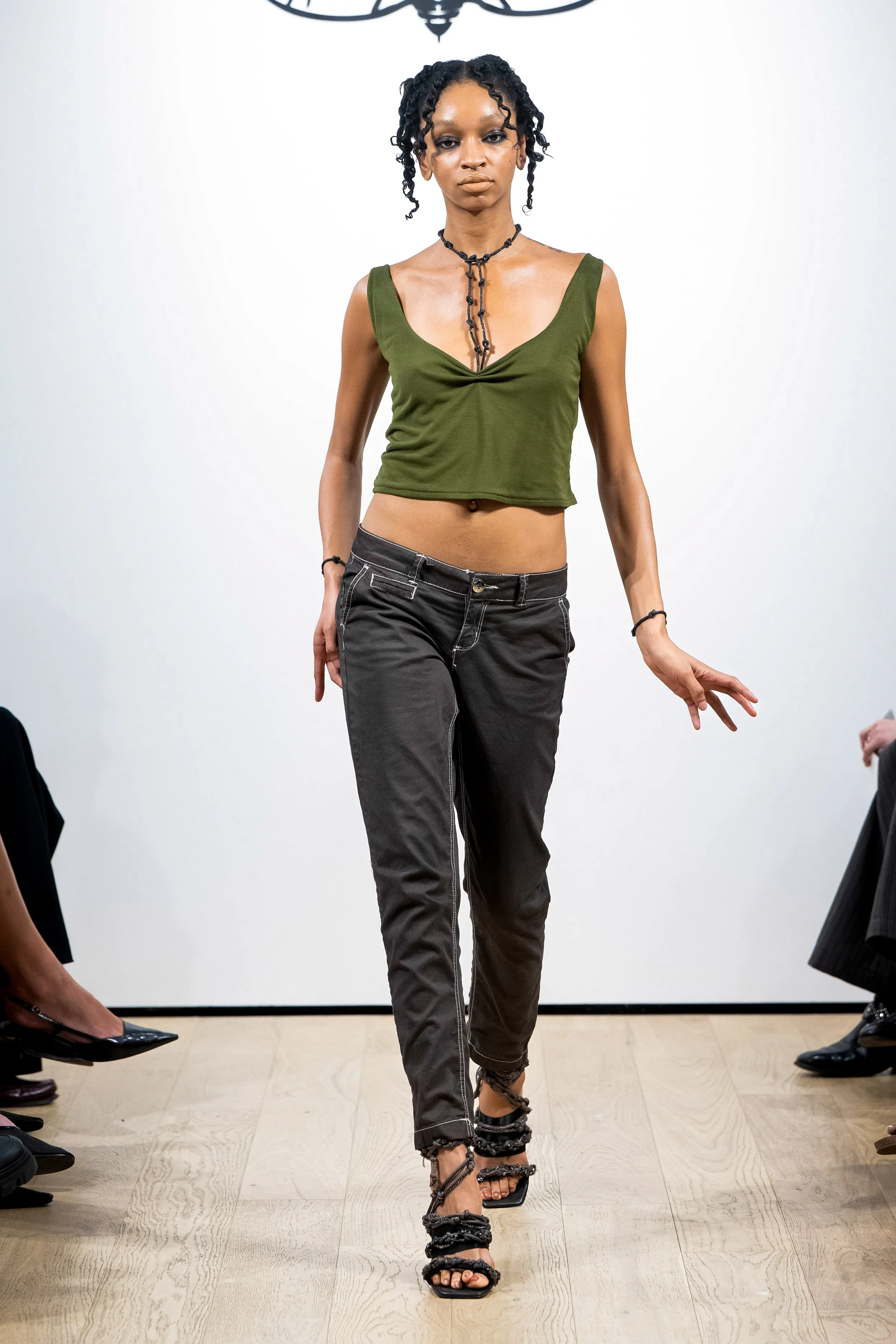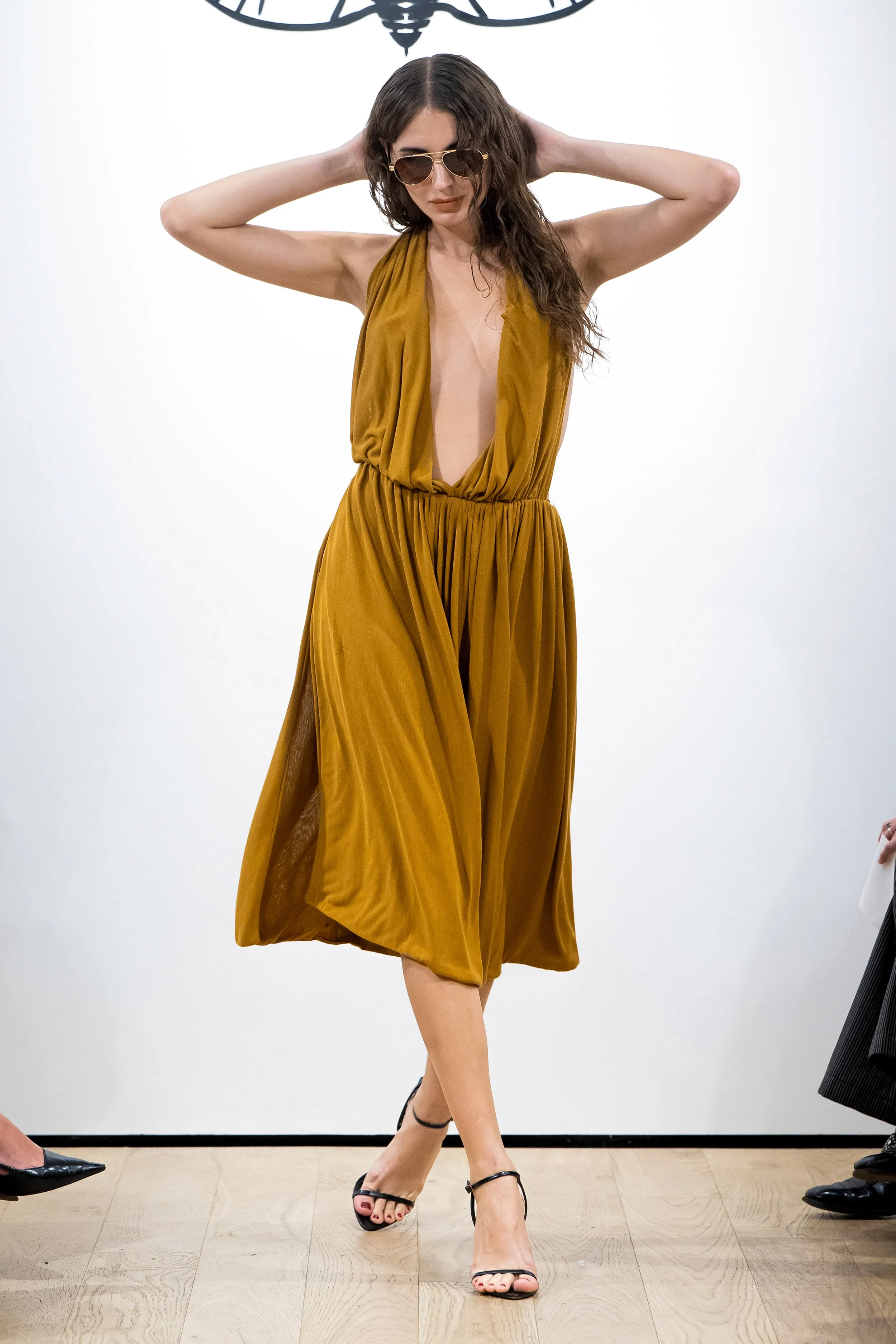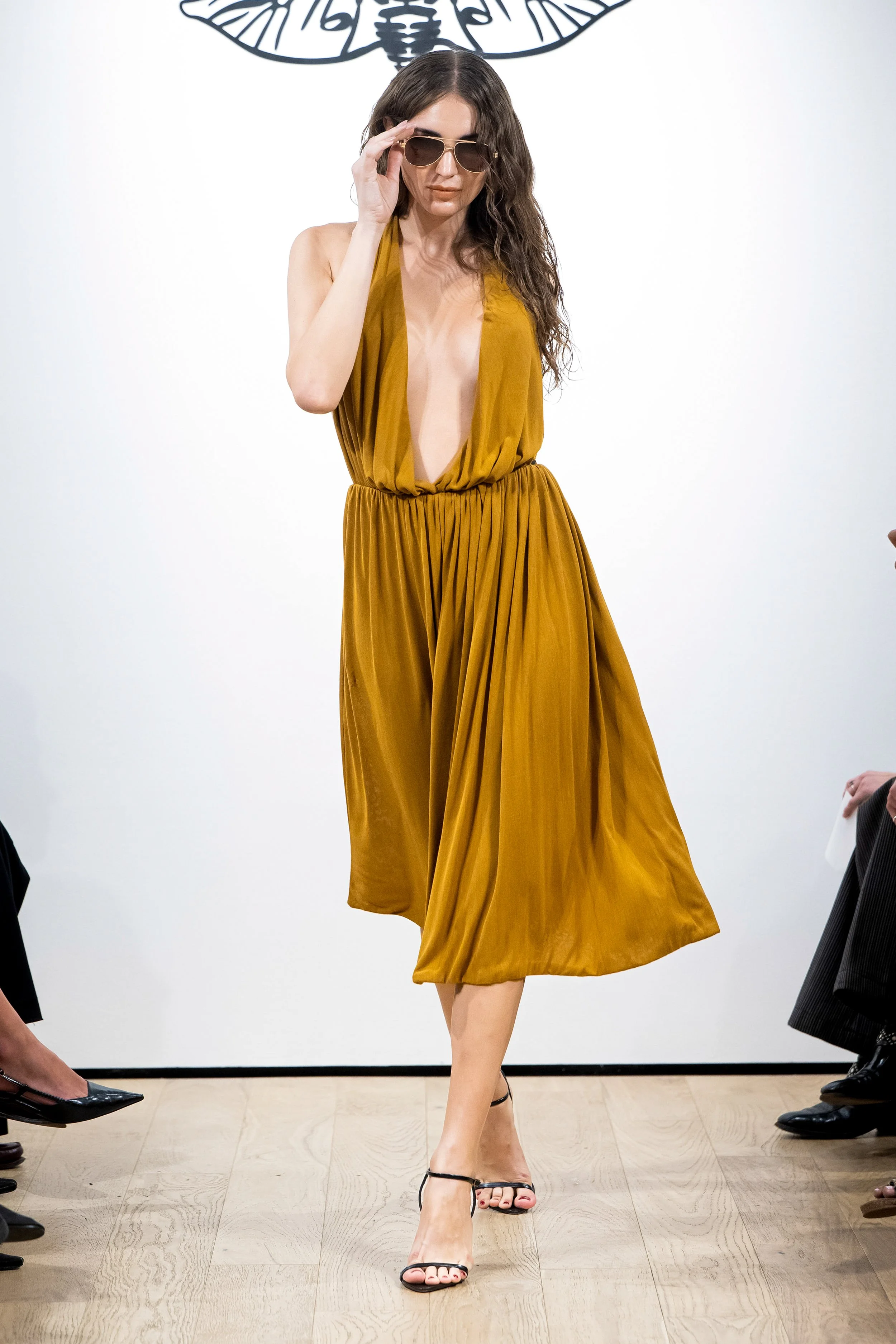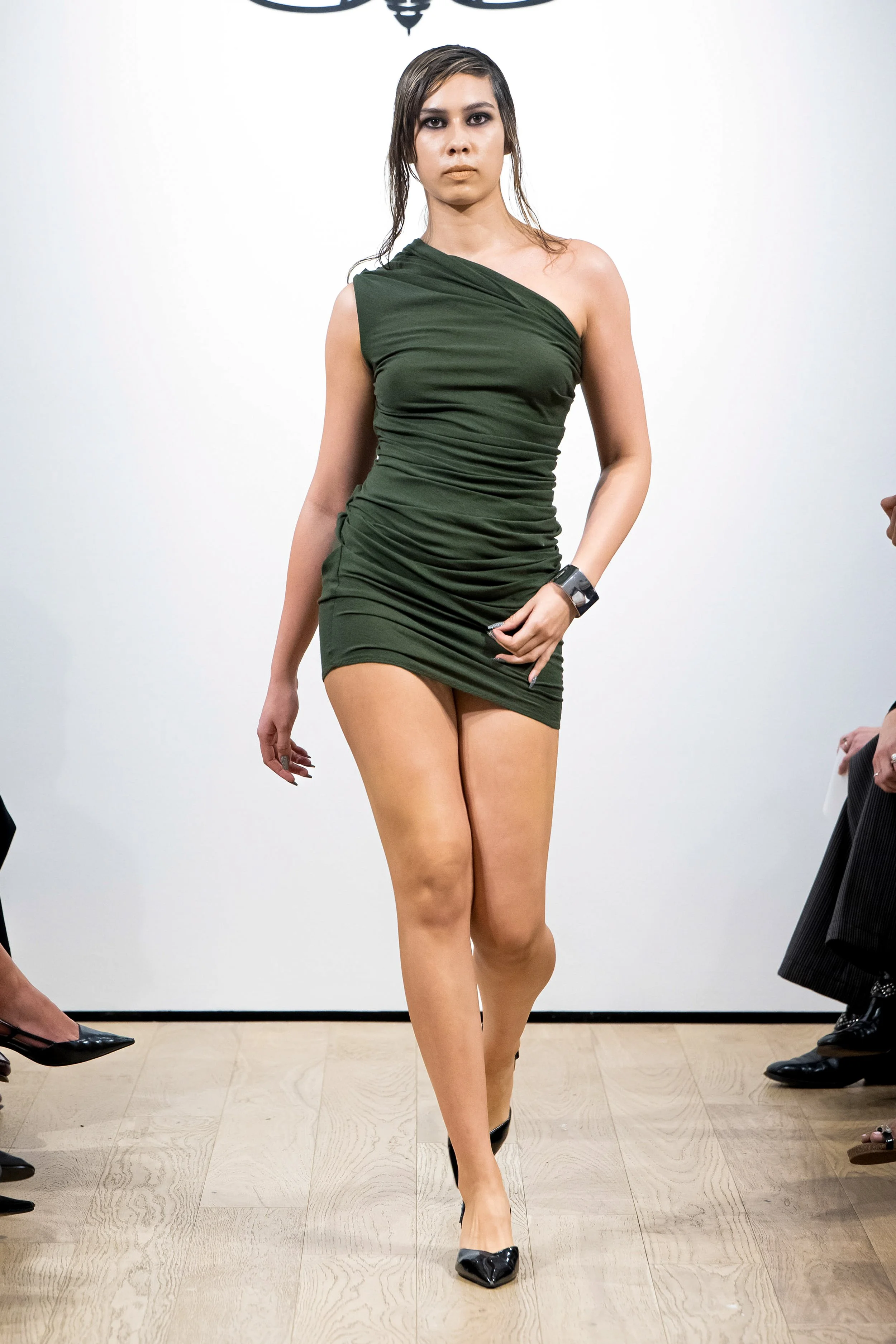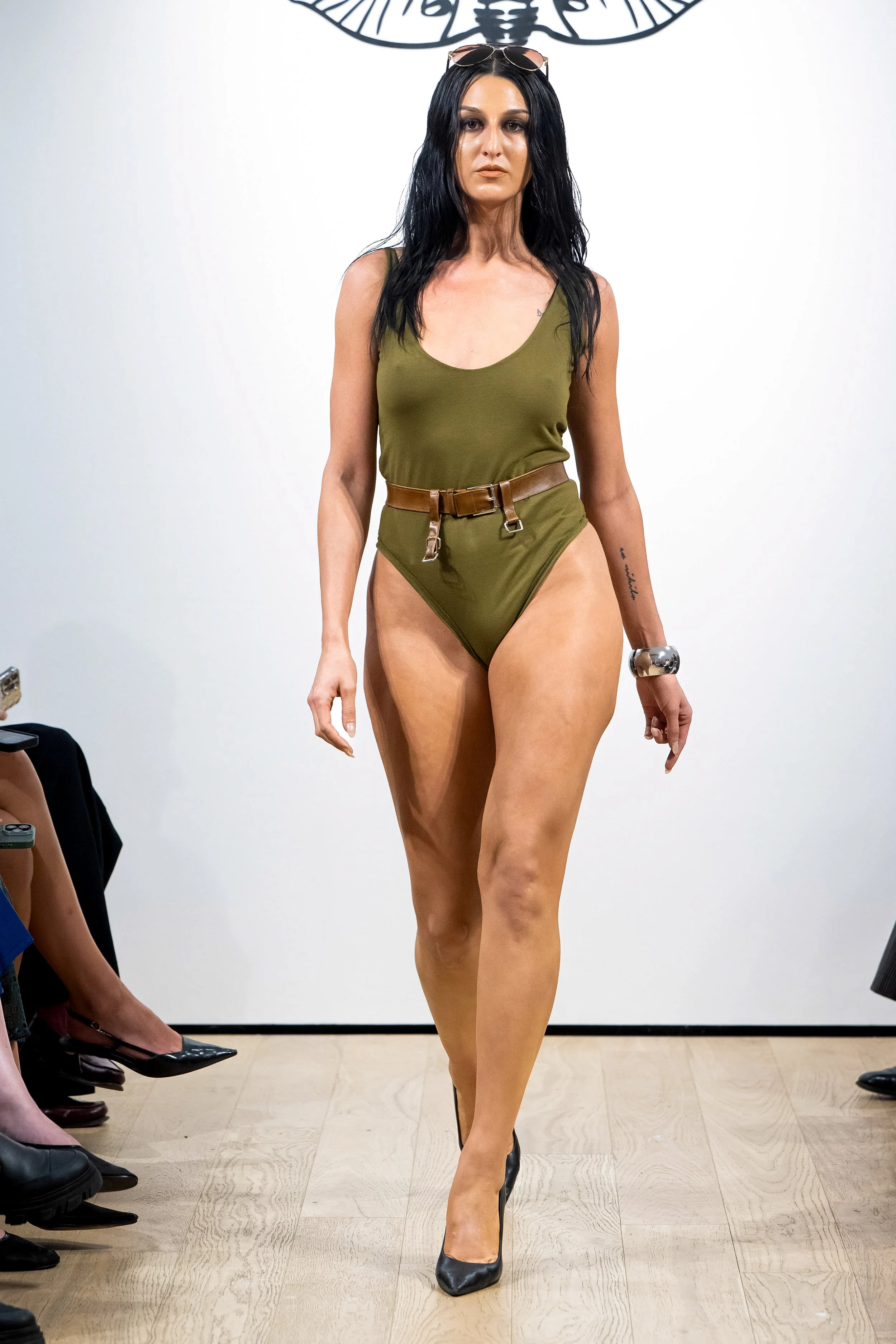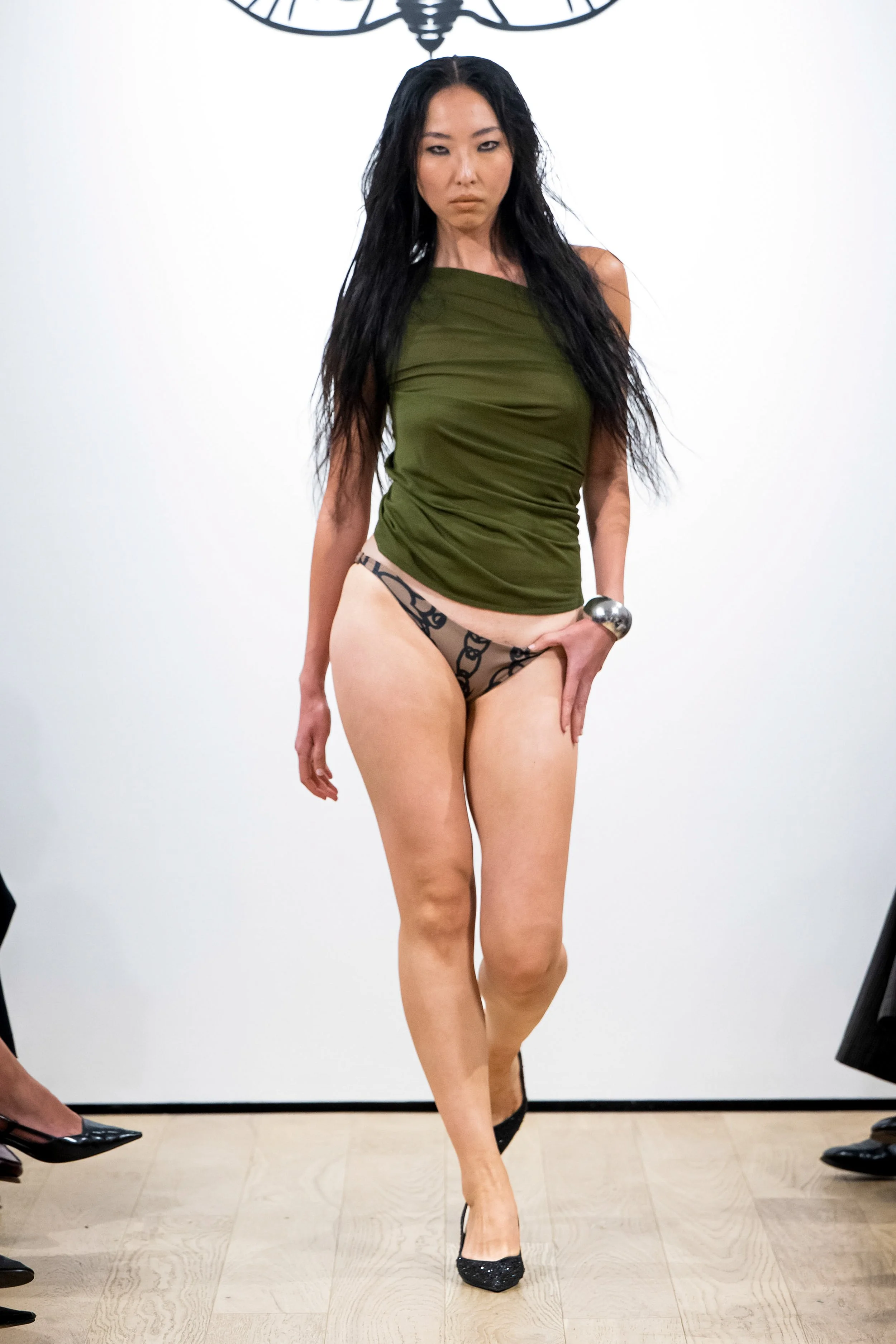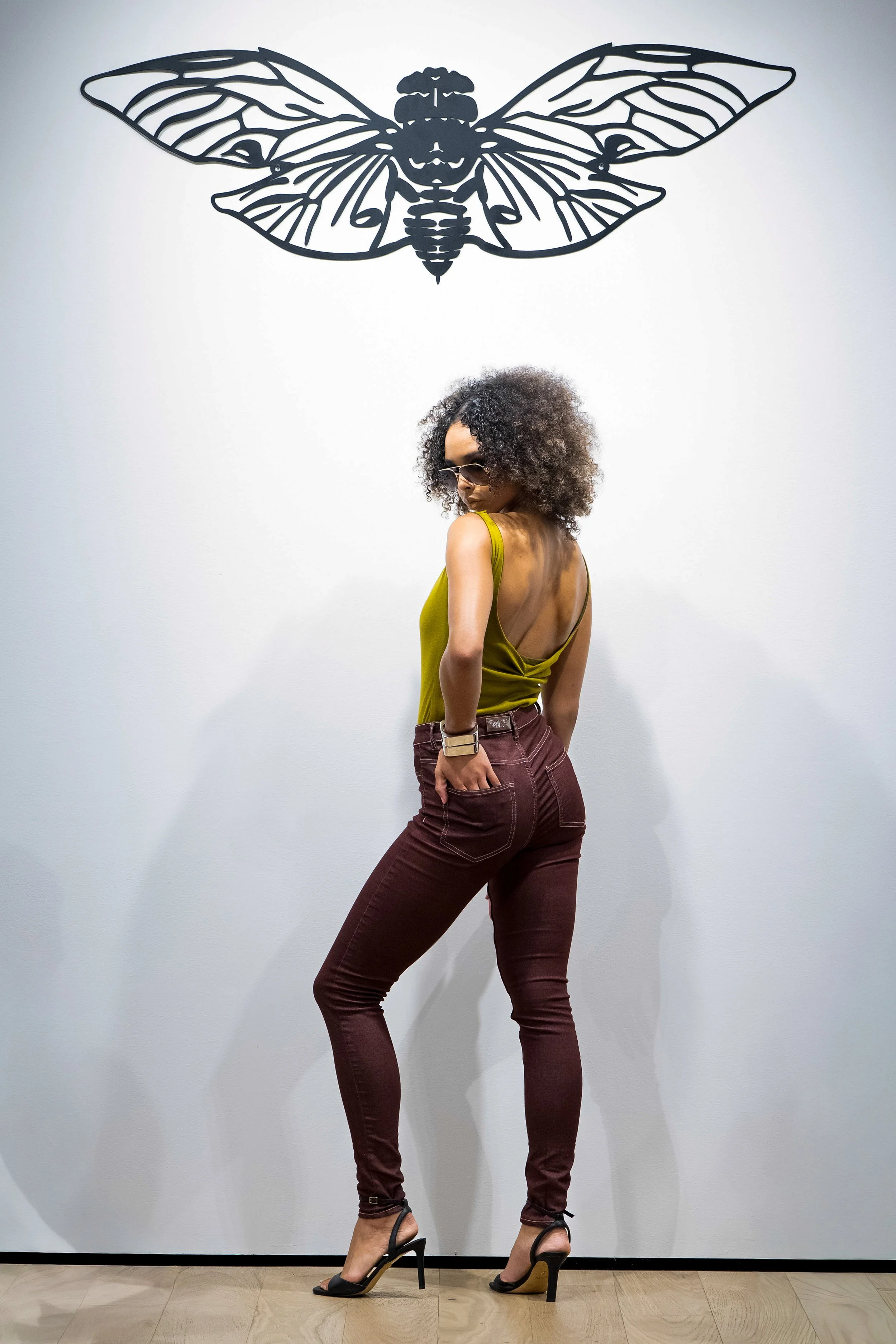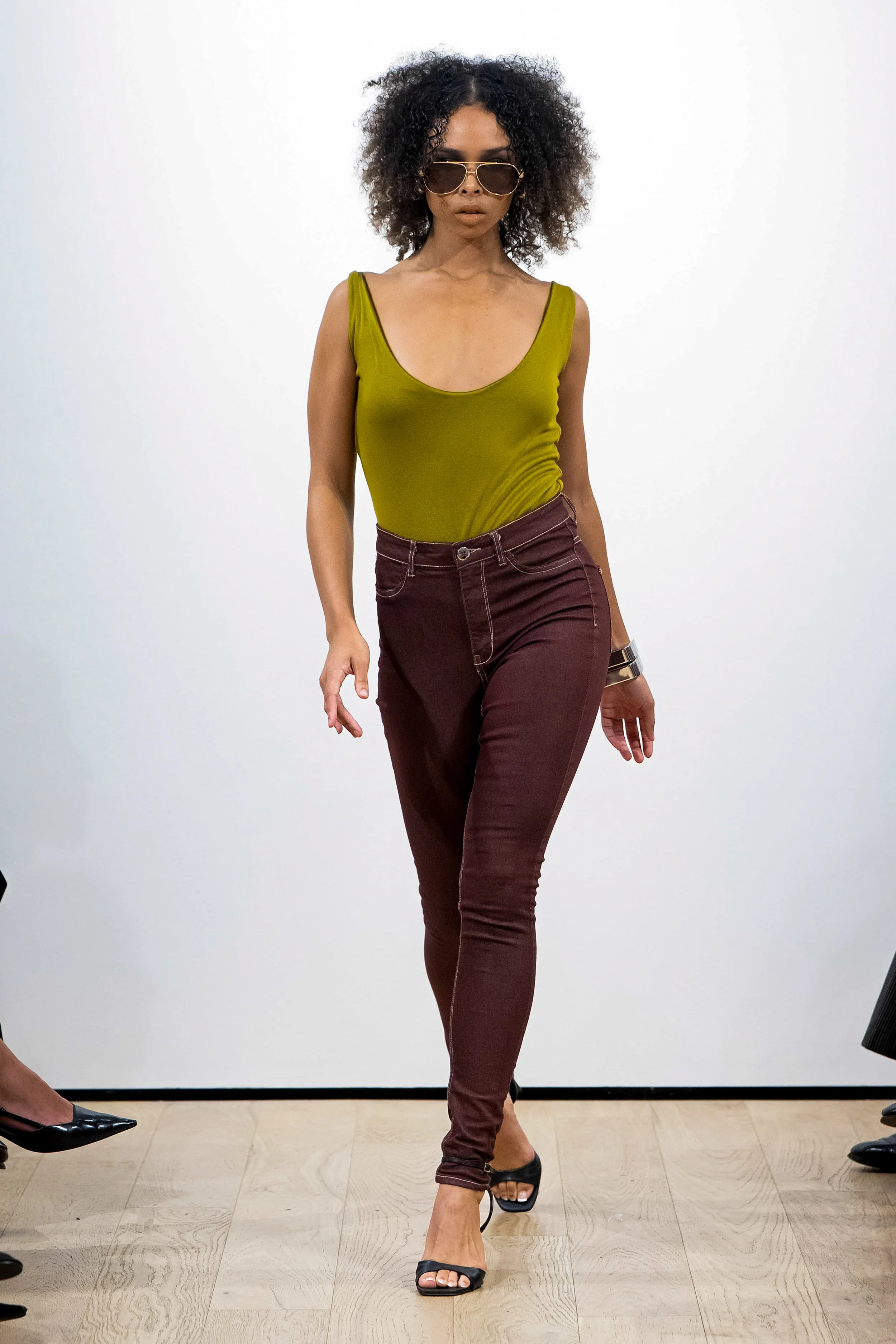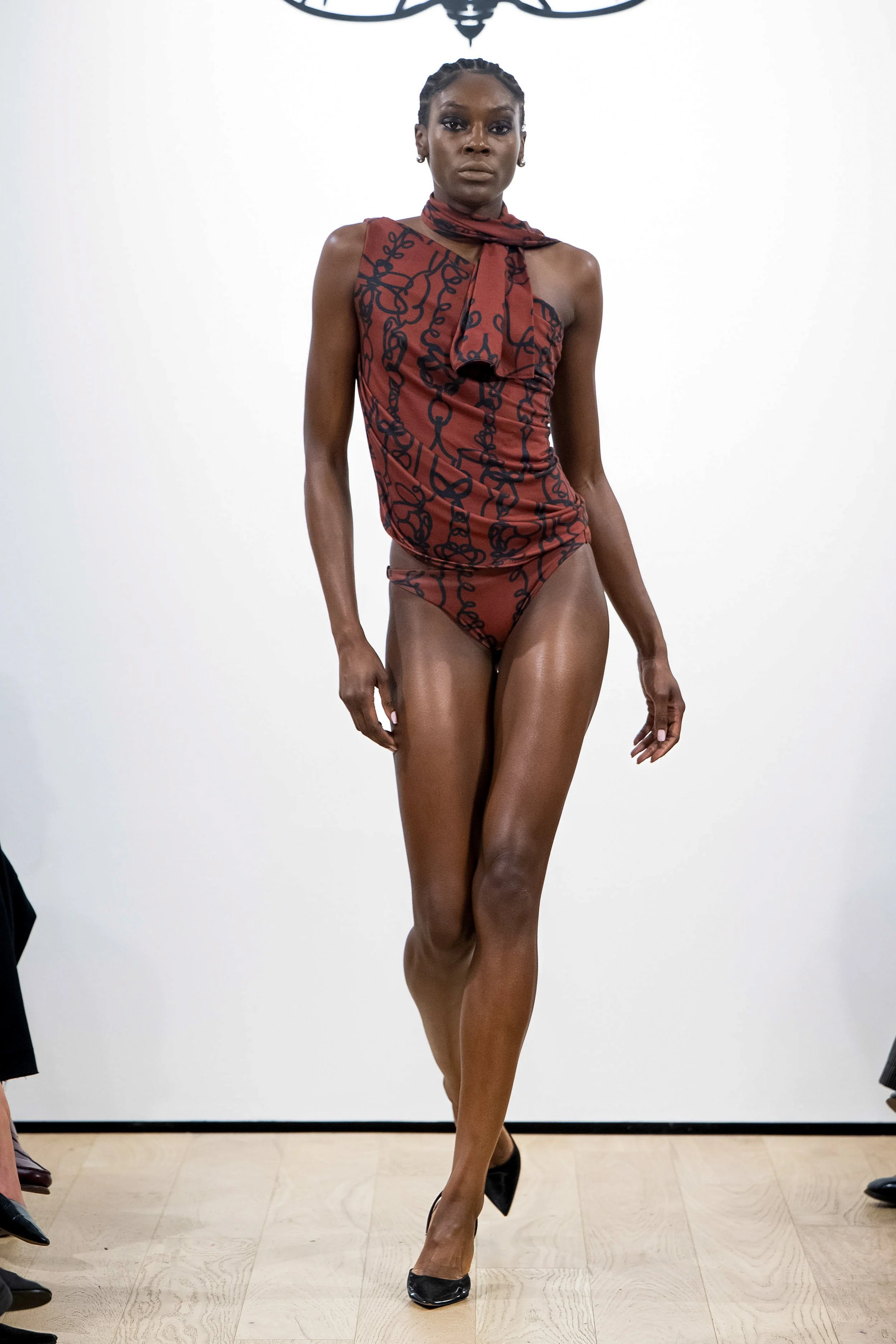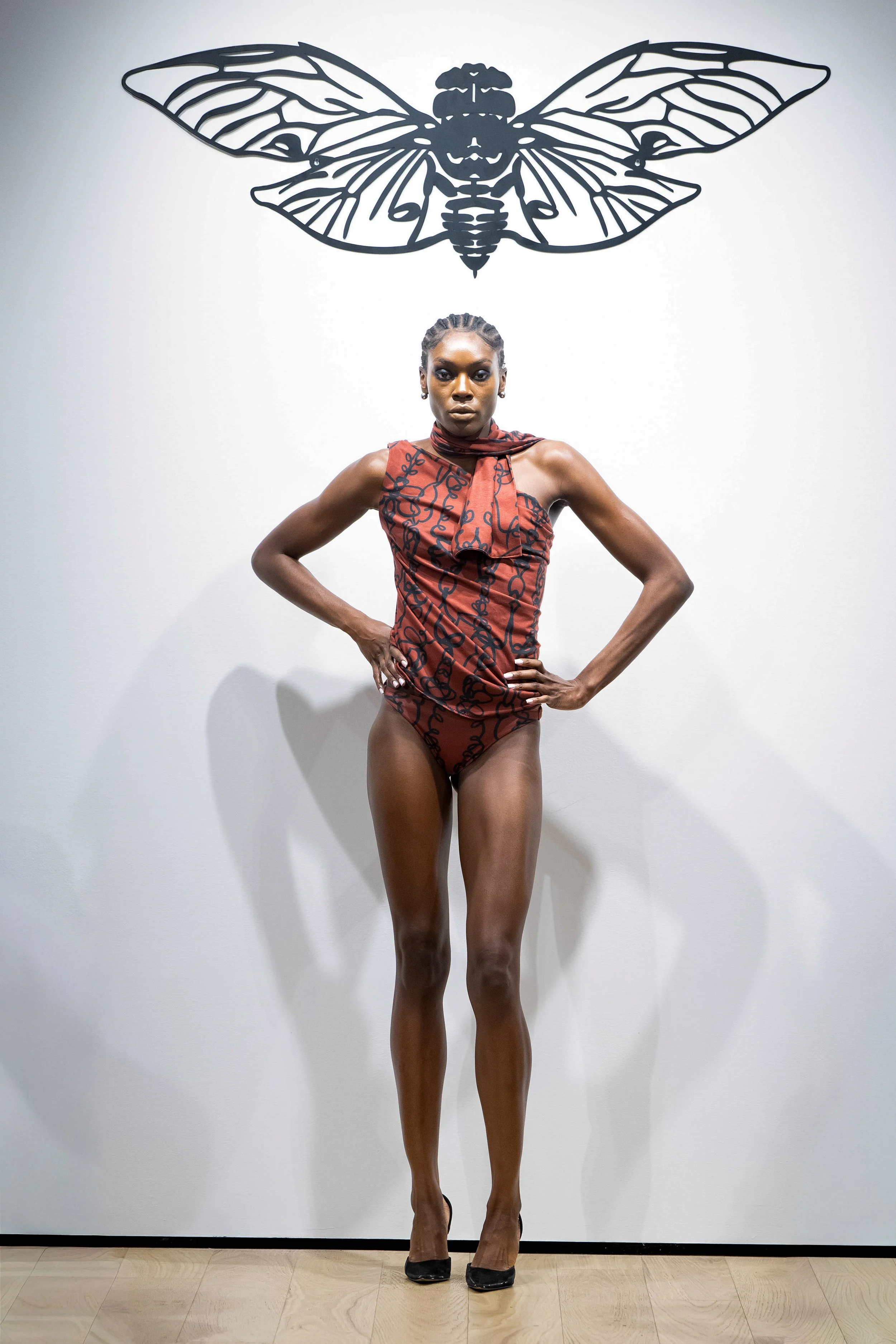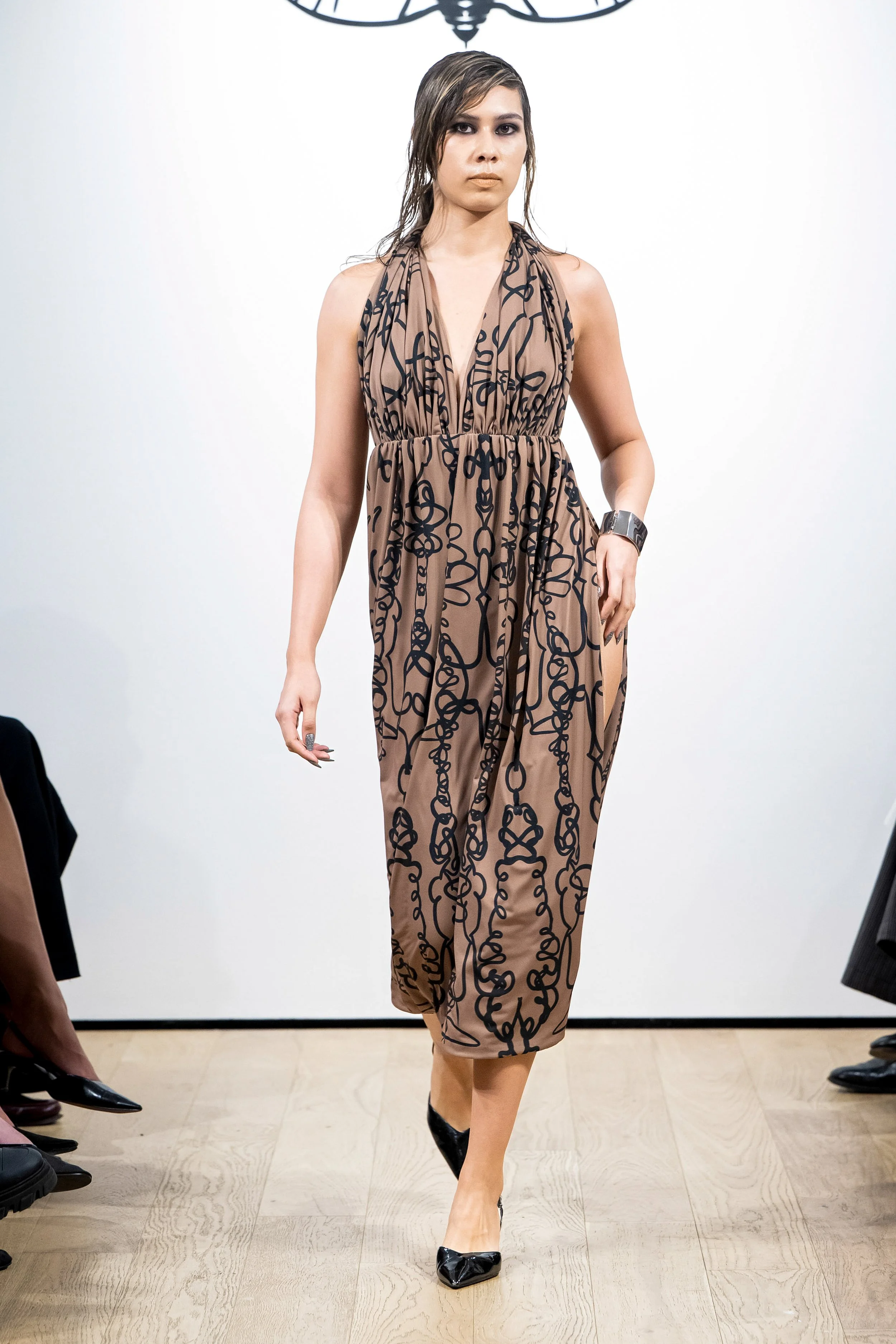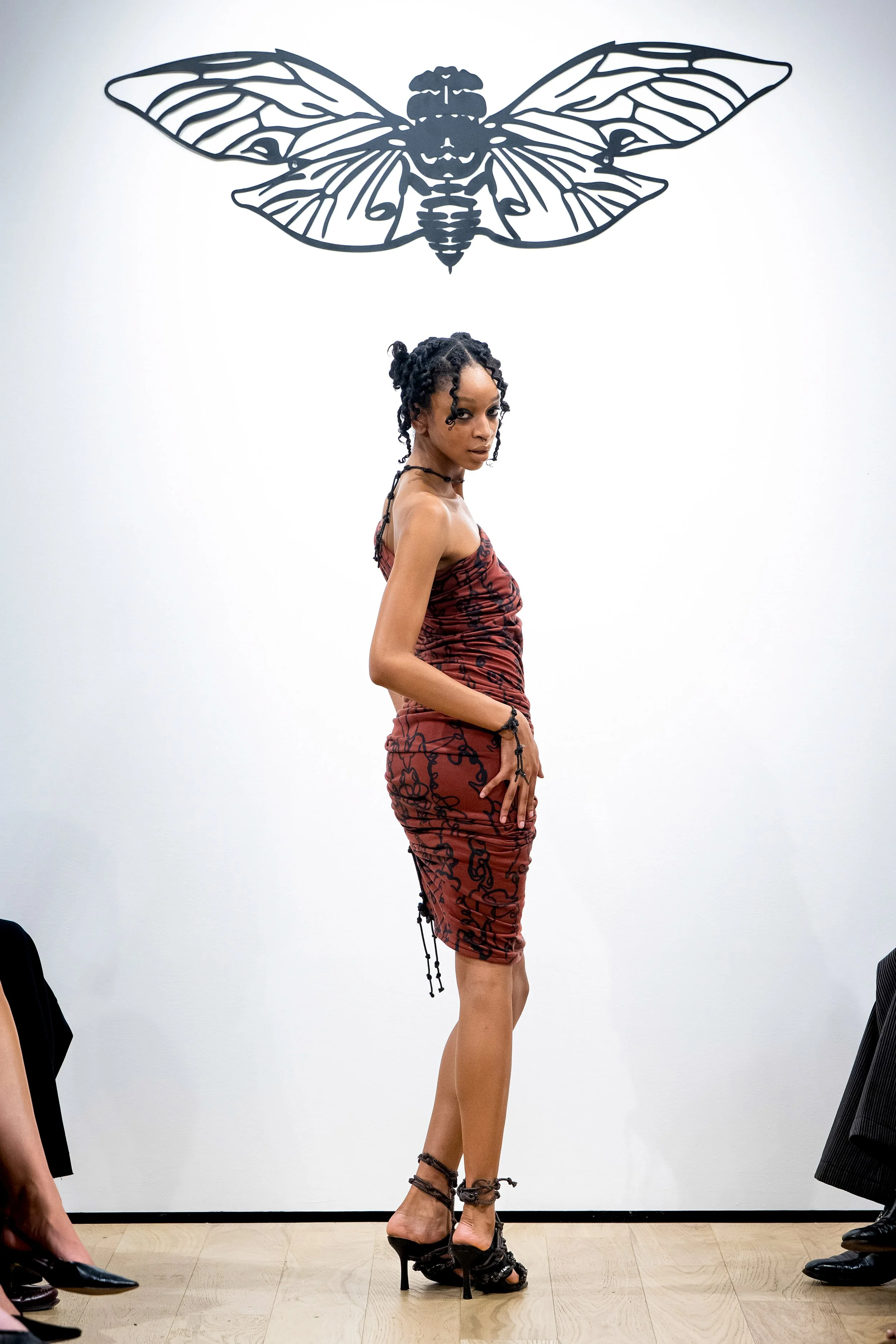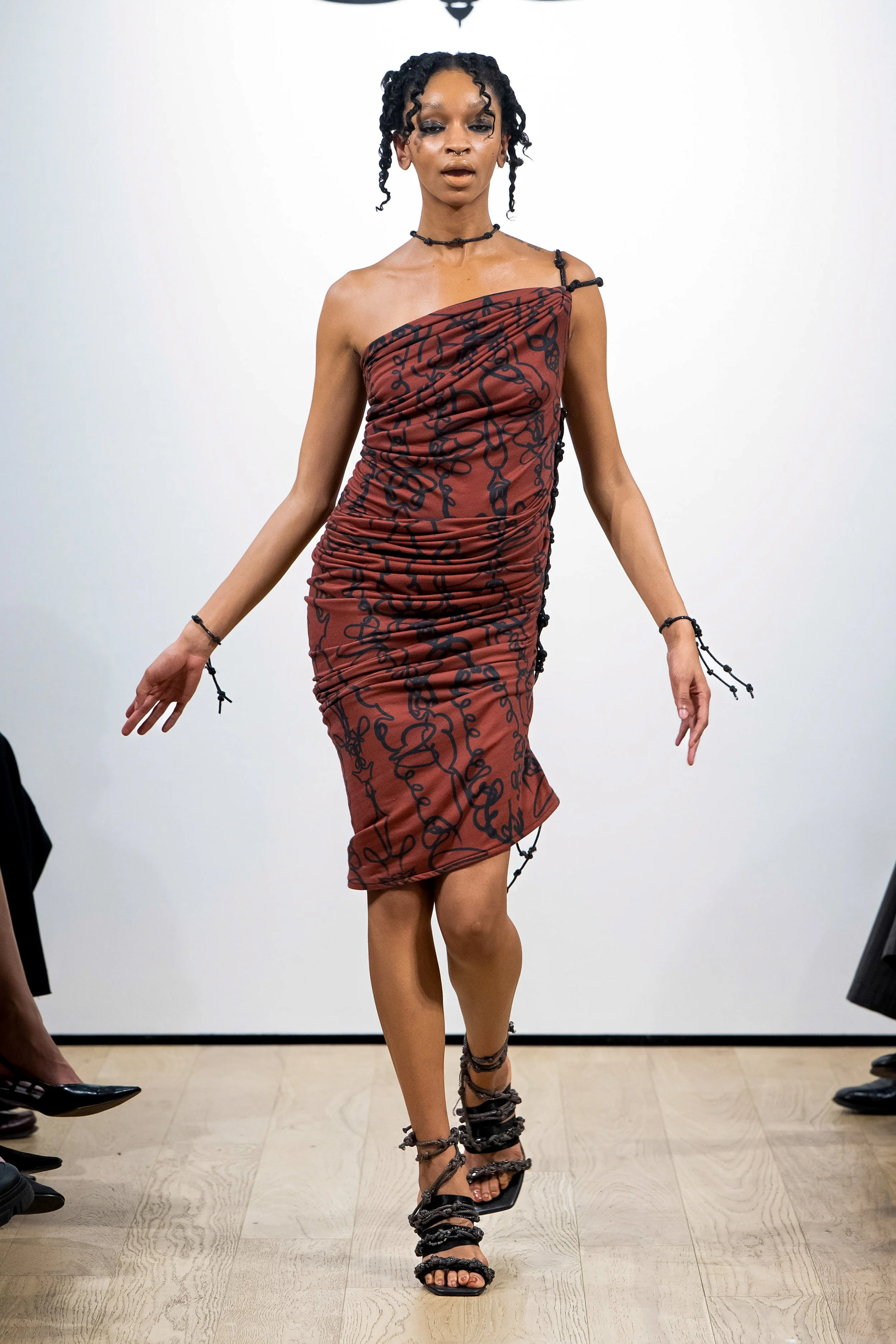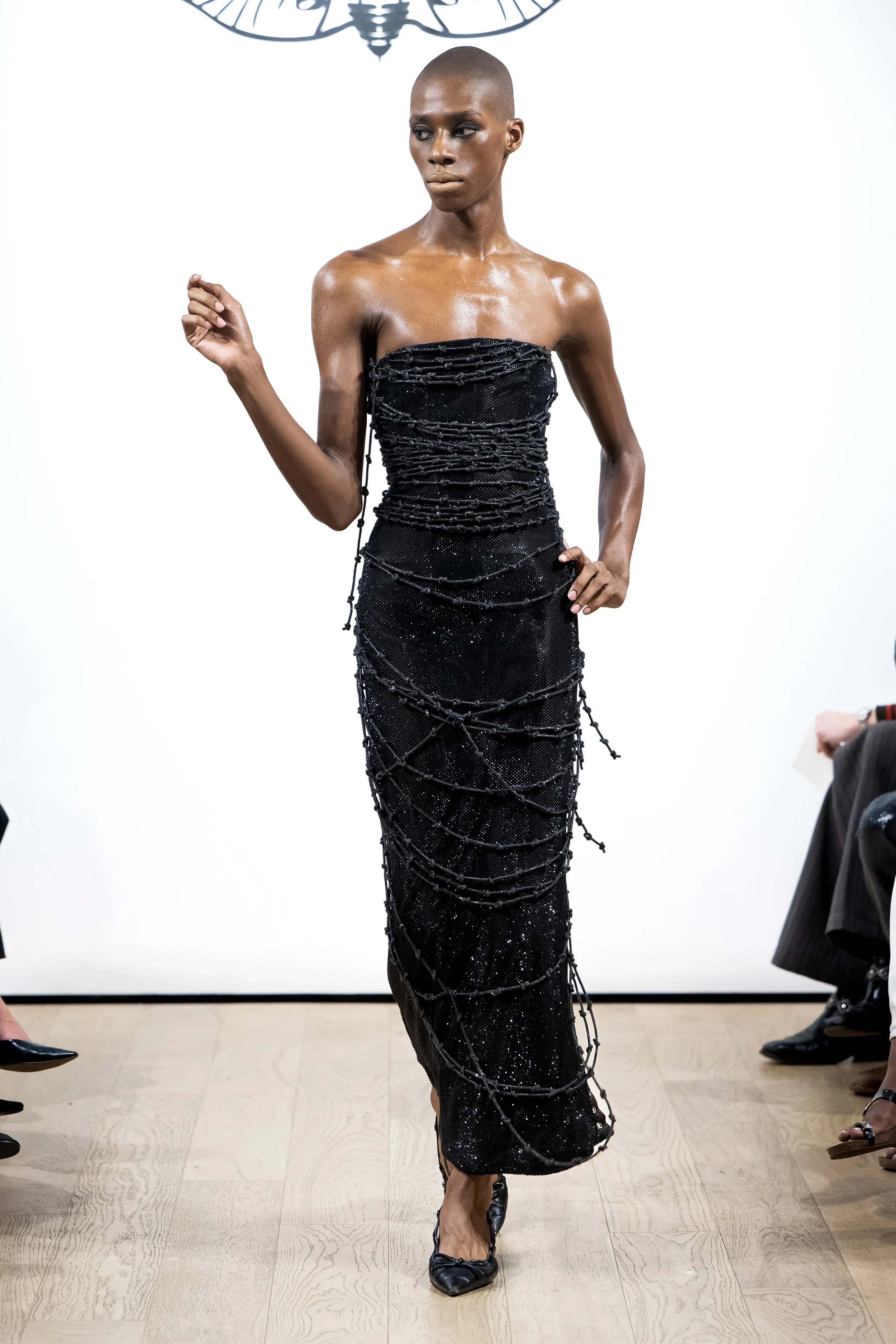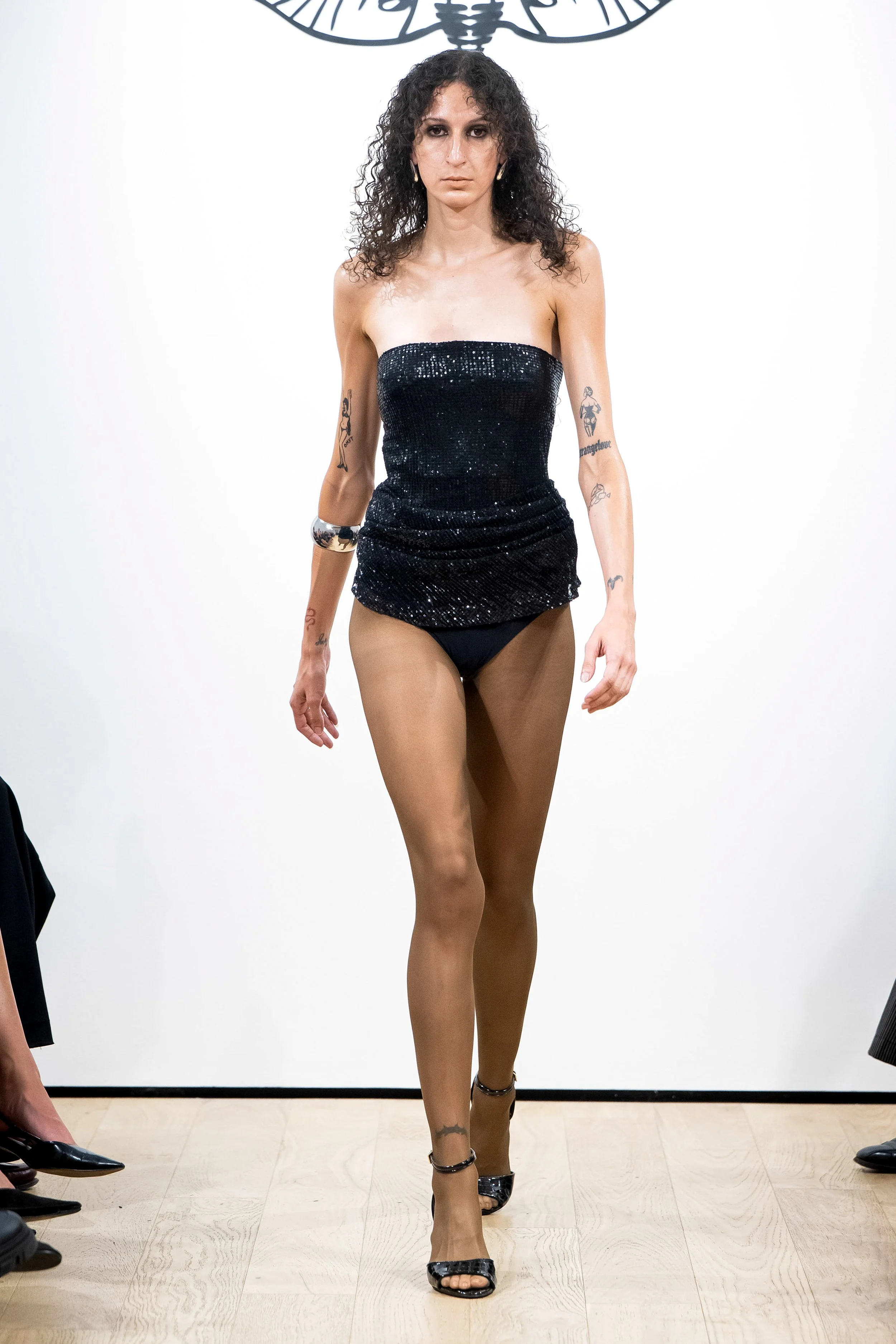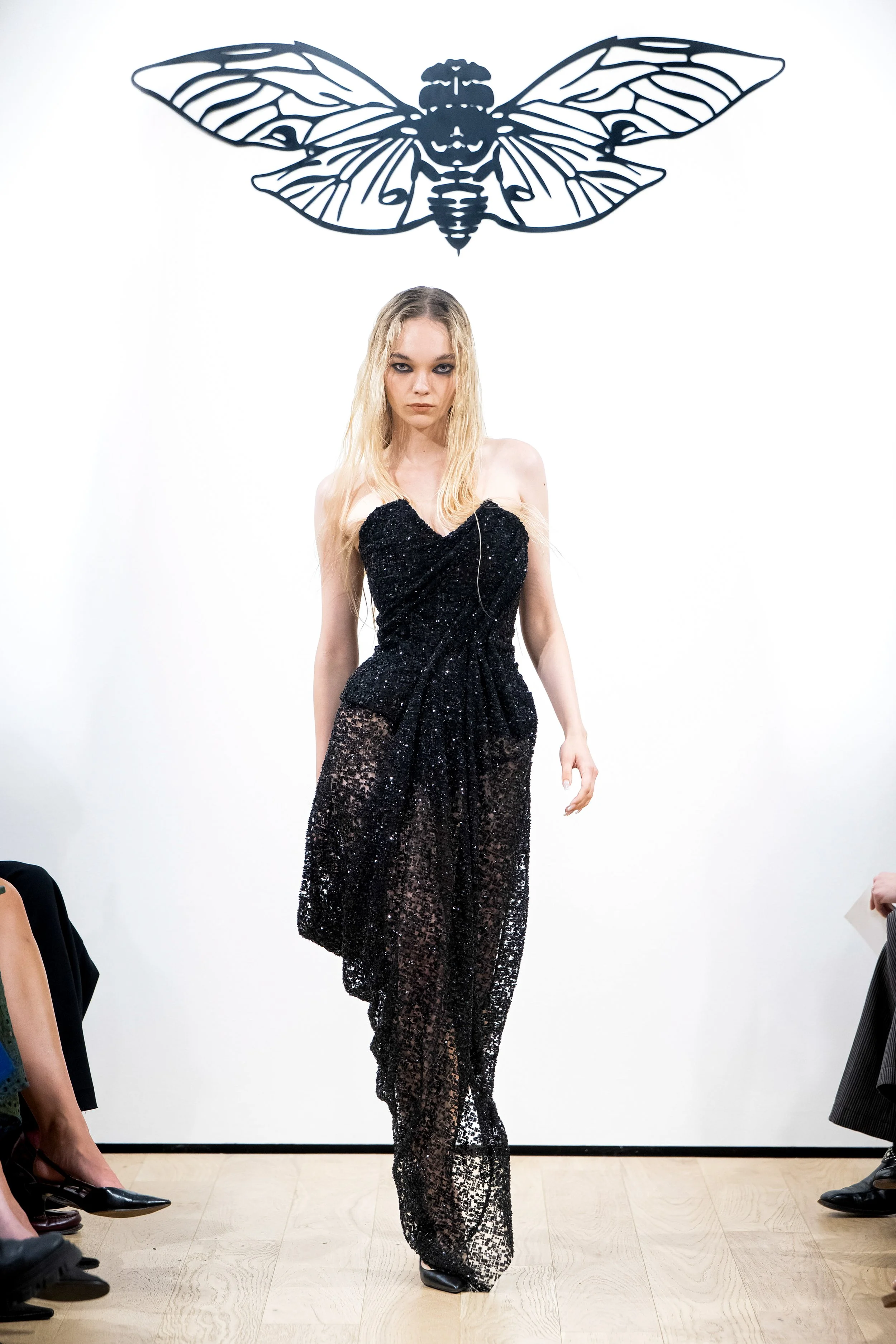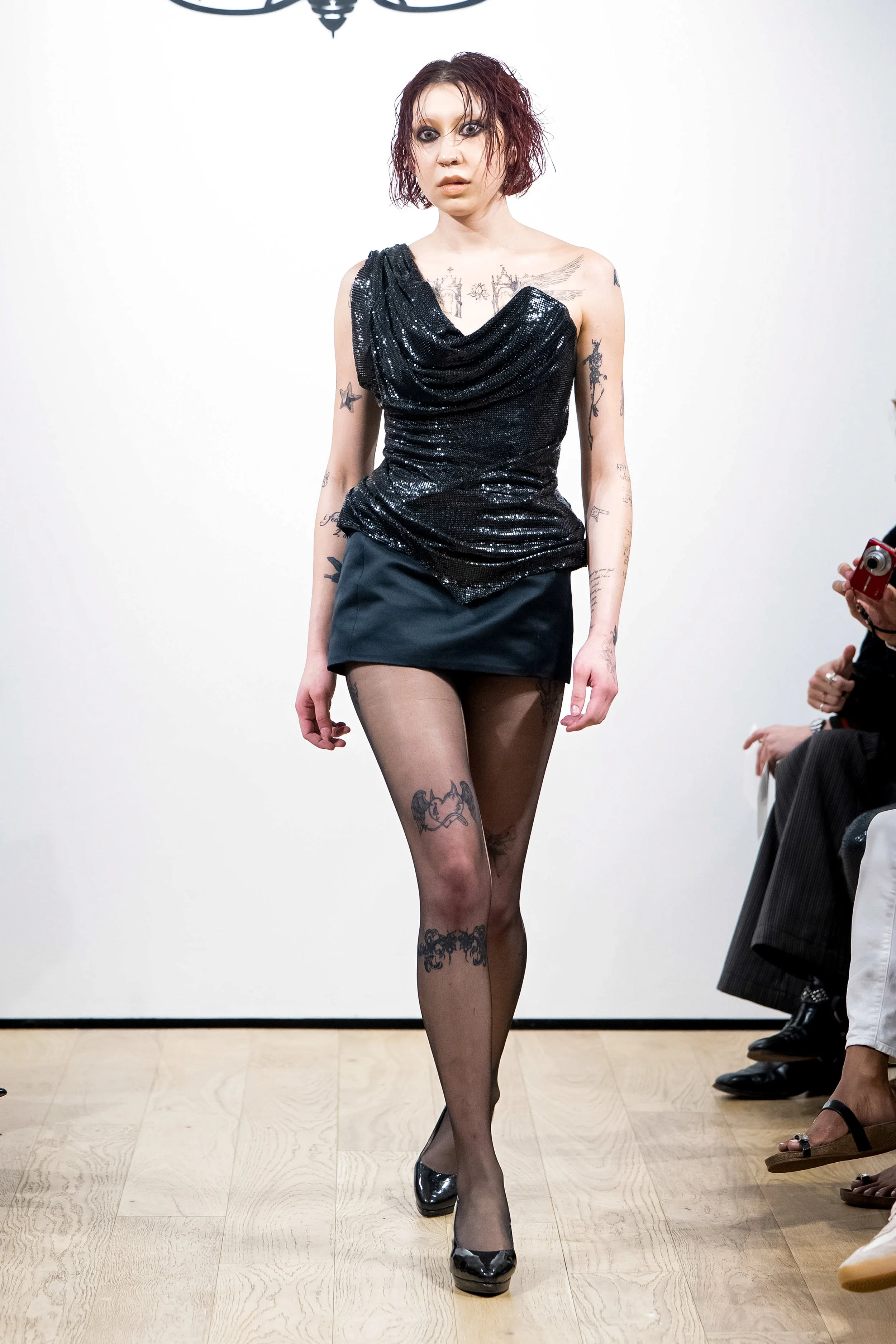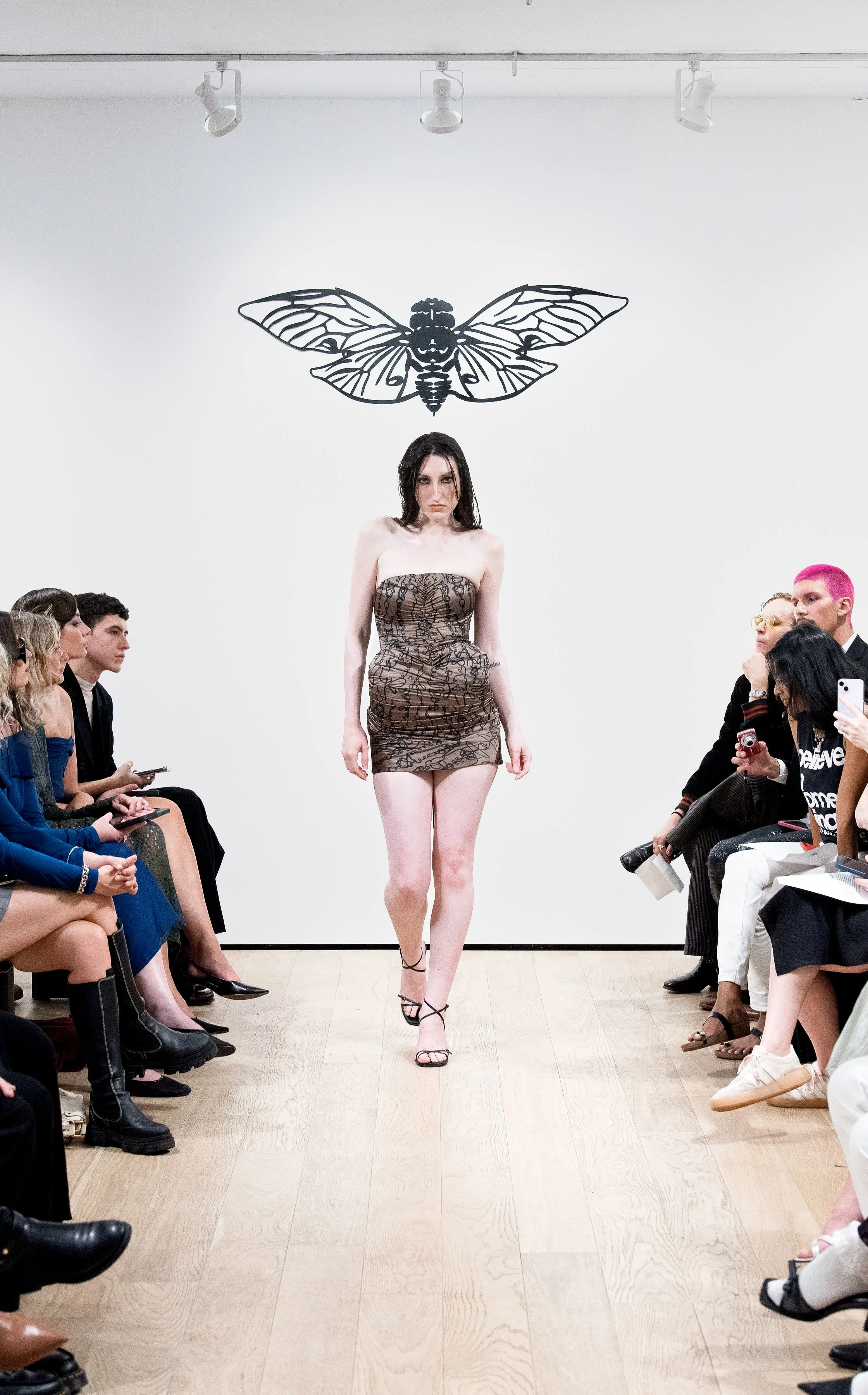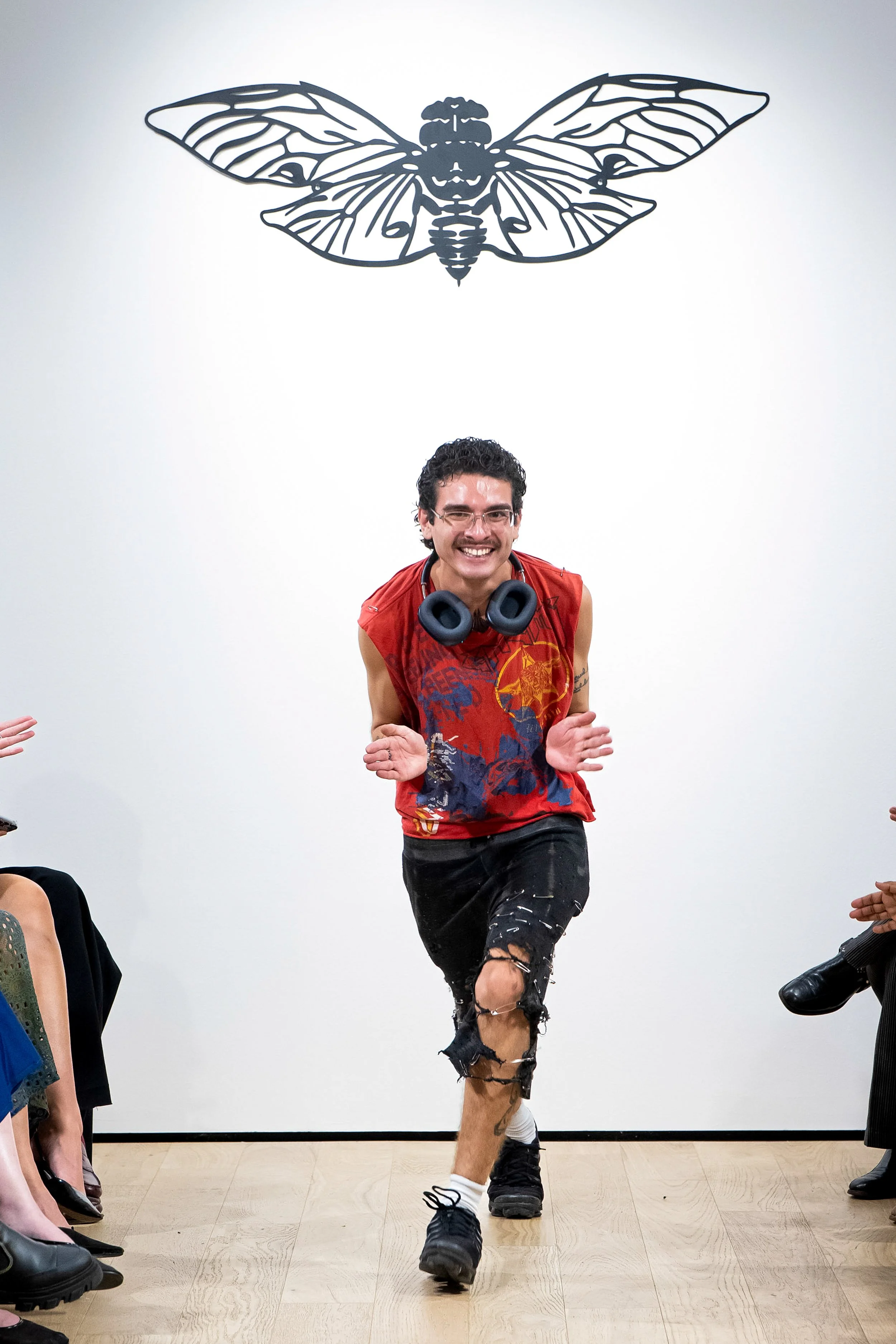CICAEDIA Spring / Summer 2026: All of this. For you.
This collection began as an attempt to remember him correctly. My father’s name was David Joseph Rosenberg, and he died in 2019 after years of fighting cancer. I was fifteen turning sixteen. Most of the memories I have of him are tied to those last months, the scent of hospital, to the silence of an empty house, to the way he would lift his head with effort just to look at me when I mustered up the courage to see him. For years, that was all there was. But I’ve trying to change that. I built this work as a way to rewrite that final image of him, to give him a different ending. A happier one.
The title came early, and it kept changing. At first it was ‘This one’s for you, Dad.’ Then it became ‘All of this is for you, Dad.’ Both felt impossible to say. Each version turned me into a child again, and every time I said it aloud it felt like reopening a door I wasn’t ready to walk through. Eventually I shortened it to ‘All of this. For you.’ Not because the words hurt less, but because I could finally say them without breaking.
The collection started with a jacket. It is his, a suede bomber that he had owned for years, so smooth it barely felt like suede anymore. I remember its weight, its smell of leather. That jacket is in nearly every old photo of him I can find. The year was 1988, his own college graduation, his marriage to my mother, the year he looked the most alive. Those photographs became my archive. The tones of the literal film, oxidized yellows, fading browns, the green of a backyard somewhere in Brooklyn, became my palette. It was the first time I looked at him through color instead of memory.
The goal was not nostalgia. It was reclamation. I wanted to replace the image of illness with one of youth, to see him as the man who loved music, who collected leather jackets, who smiled without exhaustion behind his eyes. Through the act of designing, I could rebuild him. Every choice, every detail, became a way of translating who he might have been before I knew him.
I began with draping. Fabric fell from the body without pretense. Pieces were cut so short they hovered between dresses and shirts. It was about movement and intimacy. The work felt instinctive, almost like handwriting. I was trying to find a line that belonged to him but moved through me.
Outerwear became the bridge between us. I re-cut the bomber in multiple forms: floor-length wool, cropped, playing with silhouette was a big aspect of the jackets and coats. Rope edges traced many of the curves like outlines. The rope itself came from images of power lines tangled with shoes over Brooklyn streets, a symbol of where he once lived and what still connects us. It weaves through shoes and belts and jewelry, a thread that will never unravel.
The print emerged late, when I found his old tax documents. His signature, a scrawl of impatience and intelligence, was nearly illegible. I scanned it, stretched it, mirrored it until it became ornament. What once read David Rosenberg turned into pattern, looping endlessly across silks and cottons. His name became design, not to sanctify him but to make his presence wearable, to let it move again.
Everything I had made this season was built with precision. Hardware engraved with the logo, polished twice before showtime. Silver fastenings that caught the light like medical instruments reborn as jewelry. Bags cut from dyed leather, Aviators trimmed in gold; because he and I always liked things that shined loudly, even with my distaste for any shade of gold.
The couture pieces were the most demanding. Corseted gowns of silk and chainmail, sequin mesh layered over satin. One gown was built entirely from crystal rope, each knot tied by hand until it weighed nearly twenty pounds. The finale was lighter, a printed silk mini draped over a corset base, simple, direct, intimate, revealing. Some of the dresses were originally developed with back panels and specialized elastic ribbon, designed to keep the models fully covered while still allowing movement. But during fittings, we decided to remove them. Much like last spring, leaving the back completely open has become a recurring design instinct, and here it felt right. The silhouettes were already so severe that exposing the back, revealing exactly how the garment gripped and warped the body, felt symbolic. It spoke to the way fashion can be both beautiful and suffocating, even claustrophobic.
The soundtrack held the soul of the show. I built it from the music he loved, the kind that shaped the atmosphere of his time, soulful classics that carried the warmth of a glamorous New York. Barry White anchored its rhythm, and Gladys Knight’s If I Were Your Woman closed the show, a song that felt like the emotional register of the woman walking that final look. It was not just background. It was the heartbeat of the collection, the sound of a memory re-scored.
In building this world around him, I lost sight of another figure. For a moment in the dual-collection development, I had wandered from the CICAEDIA woman, she who has always stood at the center of this house. Designing my menswear debut, Schrödinger’s Dog, a separate collection born from my own lived experience, I had begun to drift from her. To be honest I hadn’t considered her all that much; menswear was easier. It felt more like me, pseudo-instinctual and completely unrestrained, and she felt distant, theoretical, almost forgotten.
But in the process of creating All of this. For you, she returned. Not as an apparition, but as a figure more fully realized than before. I began to understand that she was never an accessory to the narrative. She was integral to it. Her presence is not a stylistic choice but a cornerstone of the house’s identity. This collection reminded me that she must exist not just in writing or concept, but in silhouette, construction, and intention.
What I realized was that she embodies the kind of woman this brand must speak to, a figure steeped in the inherited codes of aristocratic New York, yet distorted by her own contradictions. She is polished and excessive, sheltered and defiant. She does not merely inhabit wealth’s template. She exaggerates it until it becomes almost spectral. Her rebellion is not downtown chaos but uptown intoxication. Her grit is curated, yet her exhaustion is real. And within her curated world, ornament piled on ornament, she becomes the embodiment of luxury turned inward on itself, disillusionment sharpened into glamour.
She lives her fantasy completely. In a room of quiet cashmere silhouettes, she is darker, sharper, more decadent, aristocratic to the point of distortion. What she does is not simply luxury but luxury turned back on itself, intensified and made tonally austere, almost defiant. It is a vision born from wealth’s fatigue, a glamour that burns itself out only to be reignited again.
Through this process, I understood something vital: she is not a character that appears once and vanishes. She is the foundation. She is the lineage. And her presence must deepen, season after season, until she stands as the living emblem of this house.
All of this. For you. is the most honest sentence I have ever written. It holds both the devotion and the exhaustion of trying to keep someone alive through work. I know I cannot keep him here, but I can rebuild the image, not as the patient, but as the person. And in rediscovering her, I have built something concrete: the woman who defines the soul of this house. I made something beautiful. I made it carefully. And I made it for him.
This collection was also the one that broke me. Not because of its construction or ambition, but because of where I was when I made it. During an early portfolio review, a key part of the thesis process, I tried to begin my presentation with black and white photographs of my father. It felt necessary, a way to show the weight this work carried and how deeply he was at the center of it. The feedback was immediate and cold: “You shouldn’t include that. It makes people sad. It loses the focus of the woman you’re trying to create.”
That moment shattered something in me. It was the break I never returned from. I stopped caring about their idea of “the woman.” It was never my prerogative to build a character to appease critique or sanitize grief into something easy to digest. What mattered was the truth I was trying to process, the memory, the loss, the love that shaped everything I was making. Their refusal to acknowledge that truth, or even allow it into the work, fractured my relationship with the program completely.
After that review, I stopped showing up to class. Then I stopped going altogether. It was not just this course, it bled into everything. I started falling behind across the board, and failure began to feel inevitable. I was overwhelmed, overworked, and unraveling under the weight of it all. Eventually, I reached out to Student Disability Services to help build a plan with my professors, some way to complete the semester that accounted for where I actually was.
By then, I had dropped weight. I was thin, pale, and visibly not doing well. I could see the physical toll of it on myself There were days I could not get out of bed at all. It was the most extreme bipolar and depressive episode I have ever experienced. At the same time, I began repeating the same outfit over and over, a pair of safety pin shorts and a hoodie, because it was all I could manage to put on. That repetition, born entirely from survival, was noted by faculty as something “brilliant” or at least “interesting,” with one comment asking, “Where is that in your womenswear designs?” The irony of that moment was not lost on me. I was collapsing, and the very evidence of my collapse was being aestheticized and held up as creative potential.
I barely graduated. The process nearly destroyed me. But in living through it, I understood something about myself that no institution could ever teach. This was not their story. It was mine. And from that breaking point, CICAEDIA truly begins to take shape, not as the product of their system, but as the result of everything I endured outside of it.
When the last model walked, I finally felt something close to closure. For the first time, I had finished something I did not believe I could. I had carried this story, one I could not complete at Parsons and one I did not think I was ready to complete at all, to its end. And with that came an honest relief and, more importantly, a genuine pleasure. I was happy with this body of work in a way I had not been before, and that happiness carried a new kind of dedication. If I could survive this, I could survive anything. And if I could make beauty from this, then nothing, not even the worst of me, is beyond transformation.
Show-Notes Written by Yitzhak Rosenberg
Designed by Yitzhak Rosenberg
Runway Production, & Styling by Ryan Scheriff
Assisted by Indigo-boy David, Jordan Kennedy, & Bianca Fares
Sewing assistance by Irene Park, Peter Shonoda, & Sam Bettencourt
Set design done In-House
Casting by Fish Fiorucci at F10 Casting
Hair & Makeup by Sophie Hartnett & Rory Alvarez
Lead Runway Photography by FirstView Photographer Stefan Knauer and Editor Christina Borgo
Look-book photography by Andrew Morales
Backstage and Runway photography by Juan Hernandez, Maria Smith, Gianna Basile, Perri Sage, Sebastian Anderson, and more.
